Bloomington's annual May Day ritual continues under watchful eye of weathervane fish
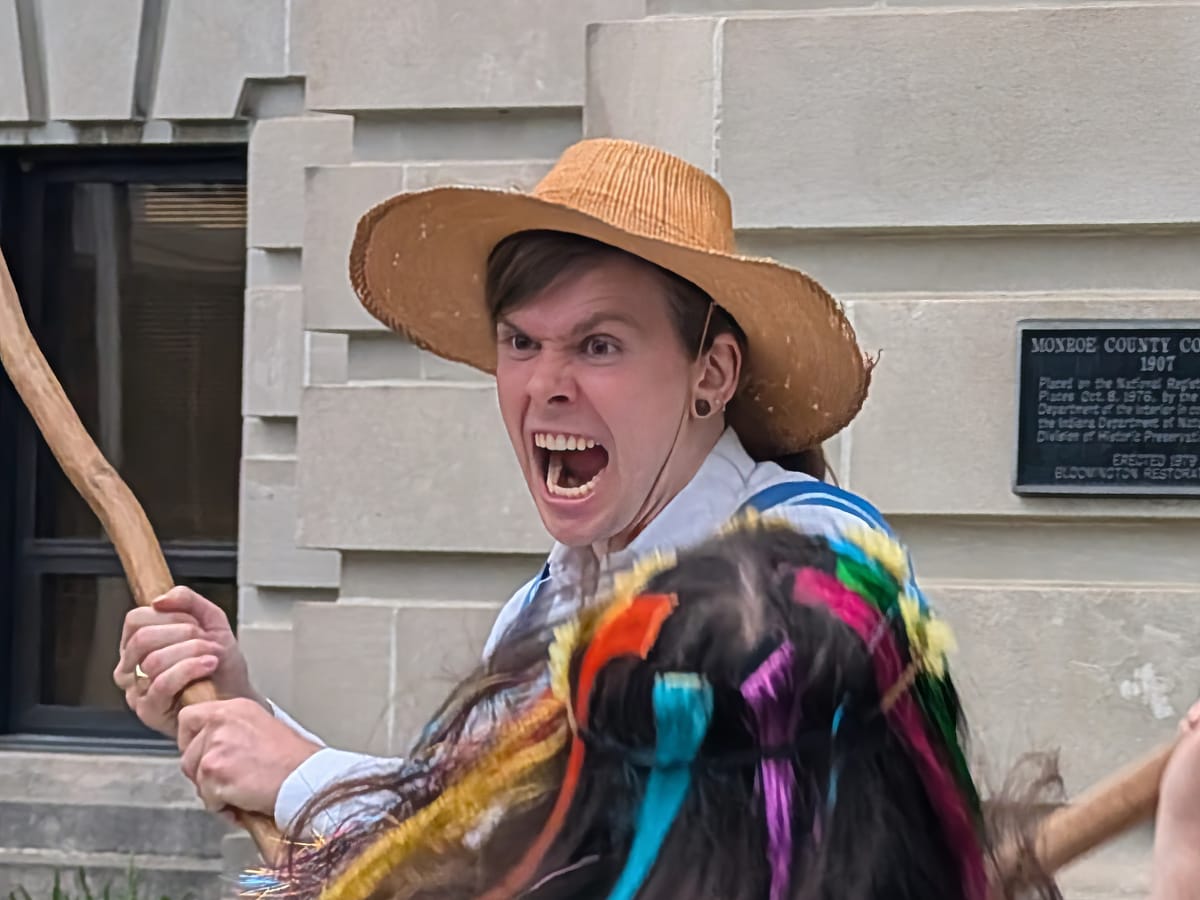
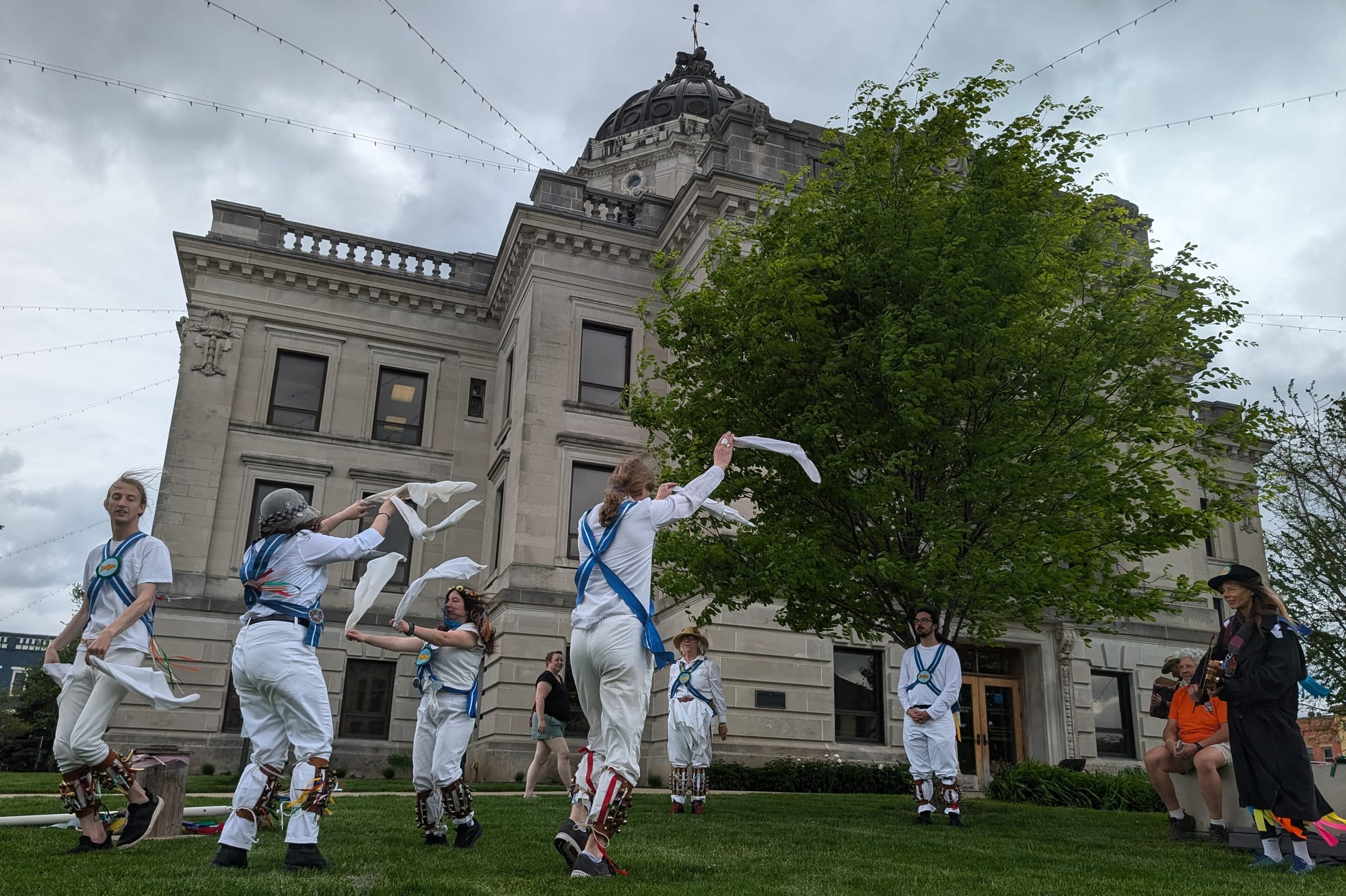
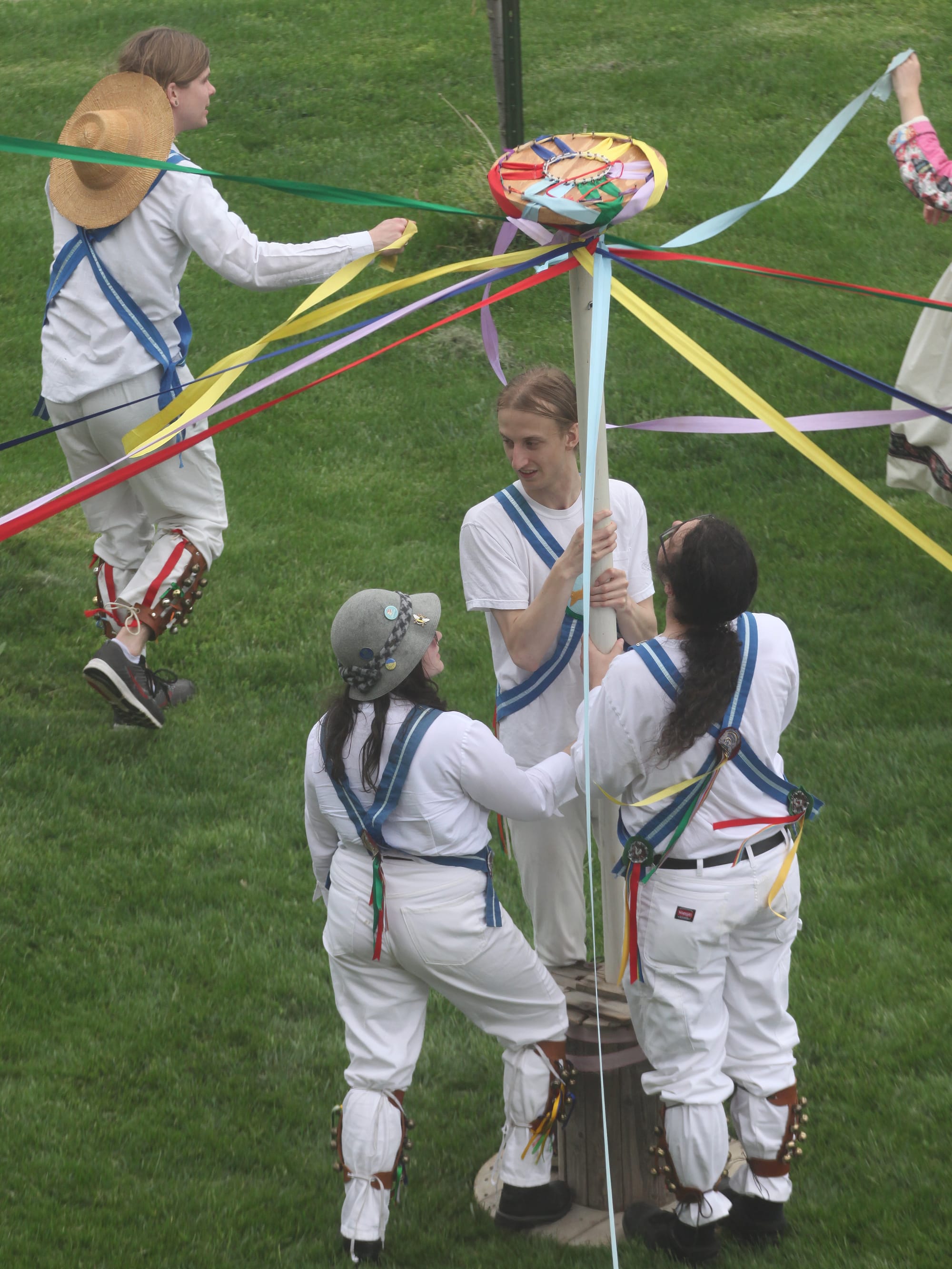
The Bloomington Quarry Morris team performs on May Day at the historic Monroe County courthouse. (May 1, 2025)
The Earth is now awake—beans busting out in garden beds, trees budding. And the wind has been alerted to bring some rain.
The Earth has risen from its slumber, because on Thursday at dawn, a team of Morris dancers summoned the spring season from a spot on the Monroe County courthouse south walkway—stepping in rhythm, jingling bells strapped to their legs, waving white handkerchiefs, and bashing wooden staves against each other and the ground.
It was the annual May Day performance for the Bloomington Quarry Morris dance team. Calling out steps for the group was Martha Marmouze, who also danced in many of the numbers.
Later, at noon, the same troupe returned to the courthouse grounds and enlisted a dozen passersby to each take up the end of a ribbon, and circle the maypole in a traditional weaving dance.
Most of Thursday's performances included the kind of traditional English folk music that is typical for Morris dancing, featuring Claudio Buchwald on button accordion and Twy Bethard on nyckelharpa.
But May Day is also International Workers' Day, and the theme of the labor movement was threaded into Thursday's festivities. For one of the numbers, the melody from Woody Guthrie's iconic "Union Maid" came through clear in Buchwald and Beethard's performance.
Two years from now, Bloomington's local rendition of the springtime May Day ritual will hit the half century mark. The first performance was given in 1977, on the occasion of Marmouze's wedding—at a different venue, down by Lake Monroe. Mark Richardson, who was watching on Thursday, recalled how one year a dancer had scaled the front facade of the courthouse building and wrapped a ribbon around the sculpture of a woman holding a torch—The Light of the World by Albert Molnar—that is built into the south façade. It was a one-off event that did not become a part of the tradition.
Also on hand Thursday was Teri Klassen, who was a part of the original Bloomington group that started performing in the mid 1970s. Many of the group still see each other more often than just on May Day—at the Wednesday night contra dances held at Harmony School, she said.
On Thursday, Marmouze presided over the part of the ceremony where a poppyseed cake was impaled from below by a sword, and then cut up and served to anyone who wanted to improve their chances at fertility. Two cakes were sacrificed on Thursday, one in the morning and one around noon. For the slicing of the noon cake, passerby Kyla Wargel was recruited to do the honor of impaling the cake with a sword.
Avram Primack, who was not dancing this year, but has in the past, gave some insight into the waving of the hankies and the bashing of the staves that is integral to the dances. "The hankies make the winds blow and bring the clouds. The clouds look down, and they see the hankies, and they say, 'Oh, there's a cloud over there!' And they come. And then they rain," Primack said.
The banging of the staves on the ground is to wake up the Earth because "It's time to bring the beans out of the ground, it's time to grow, we're bringing the rain," Primack said.
Primack also described how the group normally dances in the Fieldtown Morris tradition—it is known for handkerchiefs, bells, and intricate steps. But the group has recently learned some dances in the Border Morris tradition, from the border counties—Herefordshire, Shropshire, Worcestershire.
The Border Morris tradition is known for more vigorous, stompy dancing, often with face paint, sticks, and tattered costumes. During some of the performances on Thursday the dancers unleashed some grunts and growls—that's part of the Border Morris tradition, Primack said.
The costumes of Morris dance teams often include a rosette—a center round piece, worn on the chest, connected by straps. The Bloomington Quarry Morris team costumes feature a gold fish on their rosettes, which is a nod to the historic courthouse weathervane, which includes a metal fish crafted by blacksmith Austin Seward.
Christian James, who performed in Thursday's dances, told The B Square that the fish had earned the Bloomington Quarry Morris team a nickname among attendees of the Midwest Morris Ale. That's an annual event for Morris dancers in the Midwest, held every Memorial Day weekend. The nickname: The Blooming-tunas.
Next year at dawn, the Bloomington Quarry Morris team will again perform, again under the watch of the metal fish on top of the courthouse.
May Day Bloomington, Indiana (May 1, 2025)
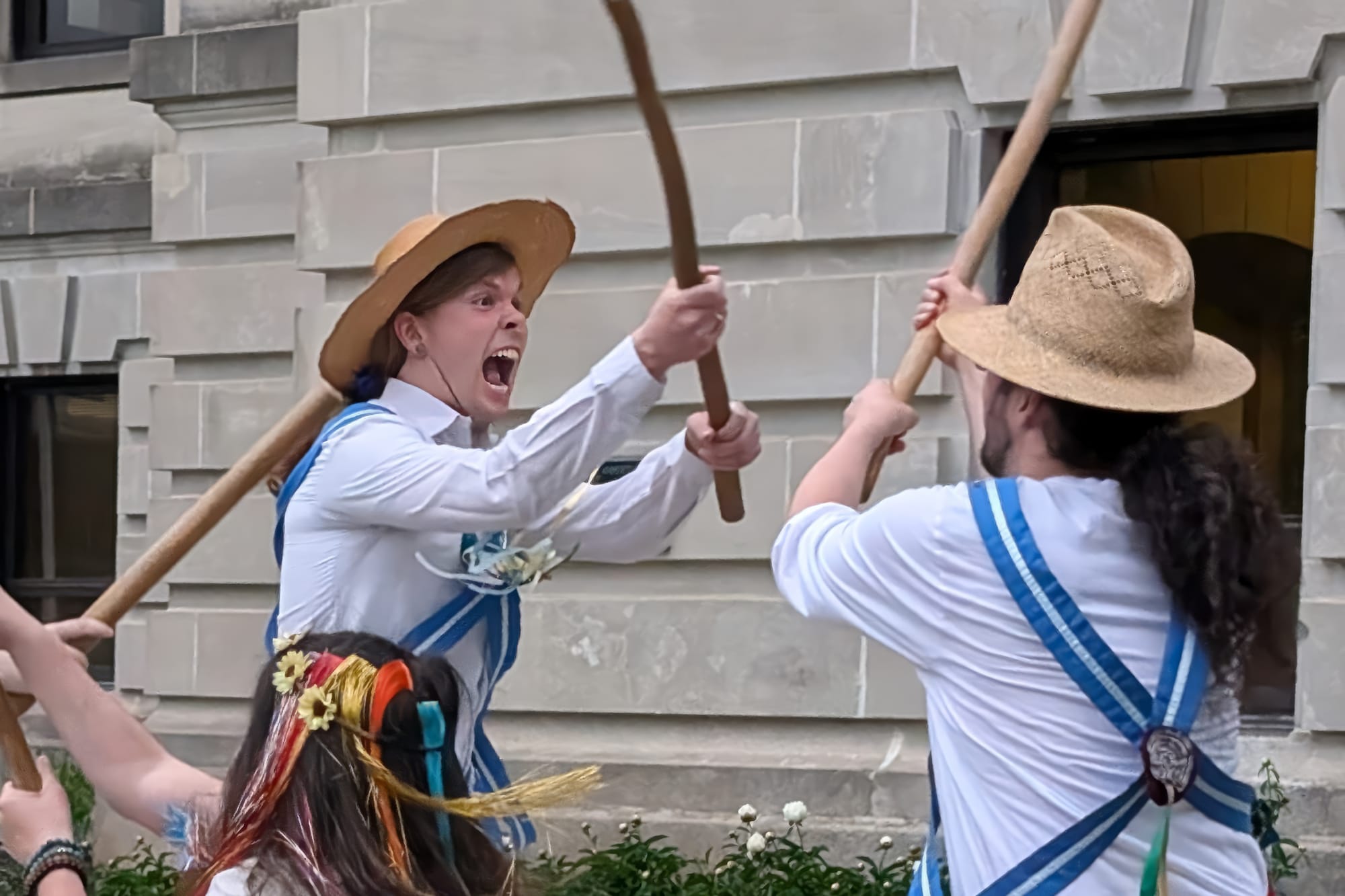
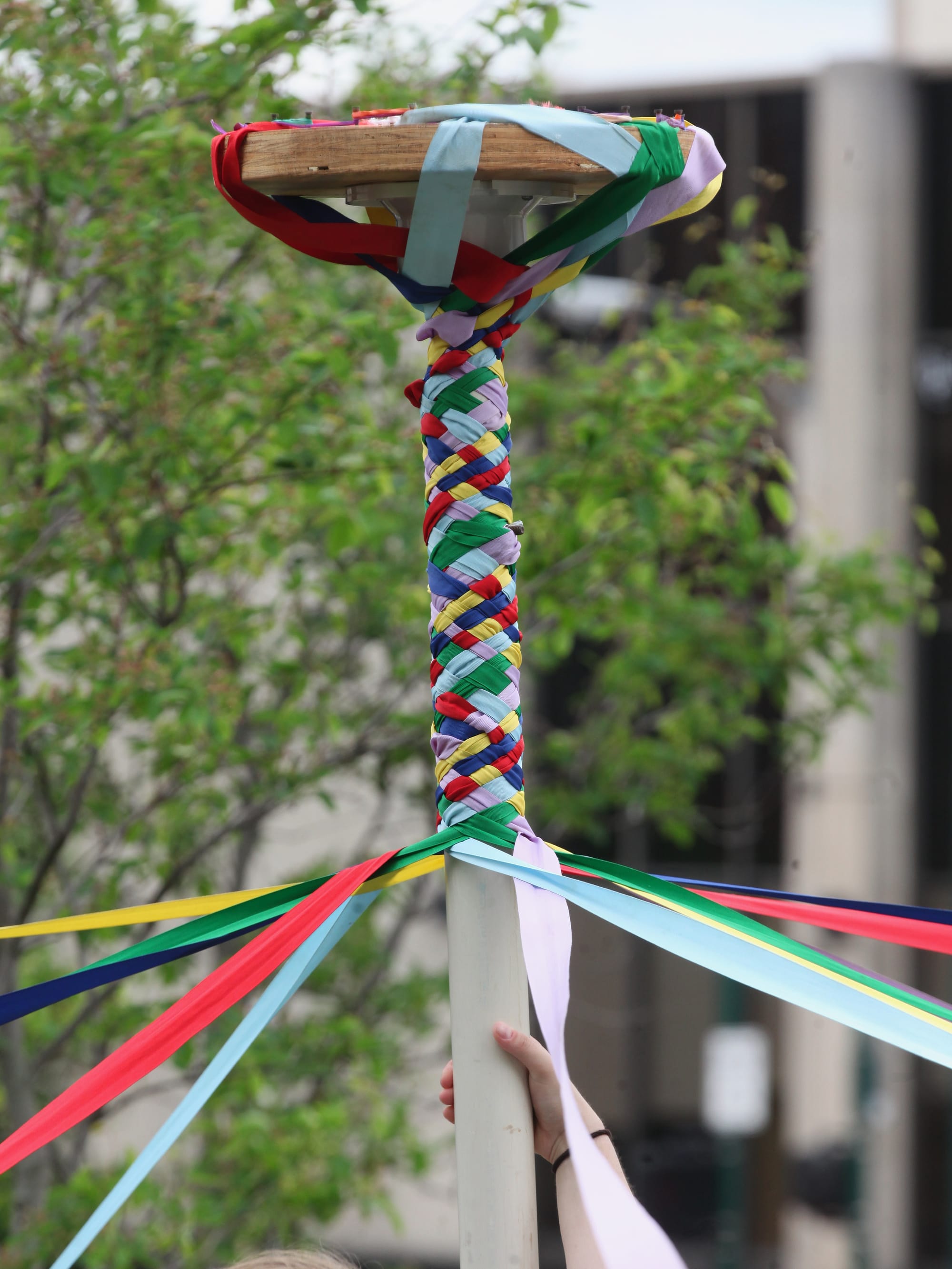
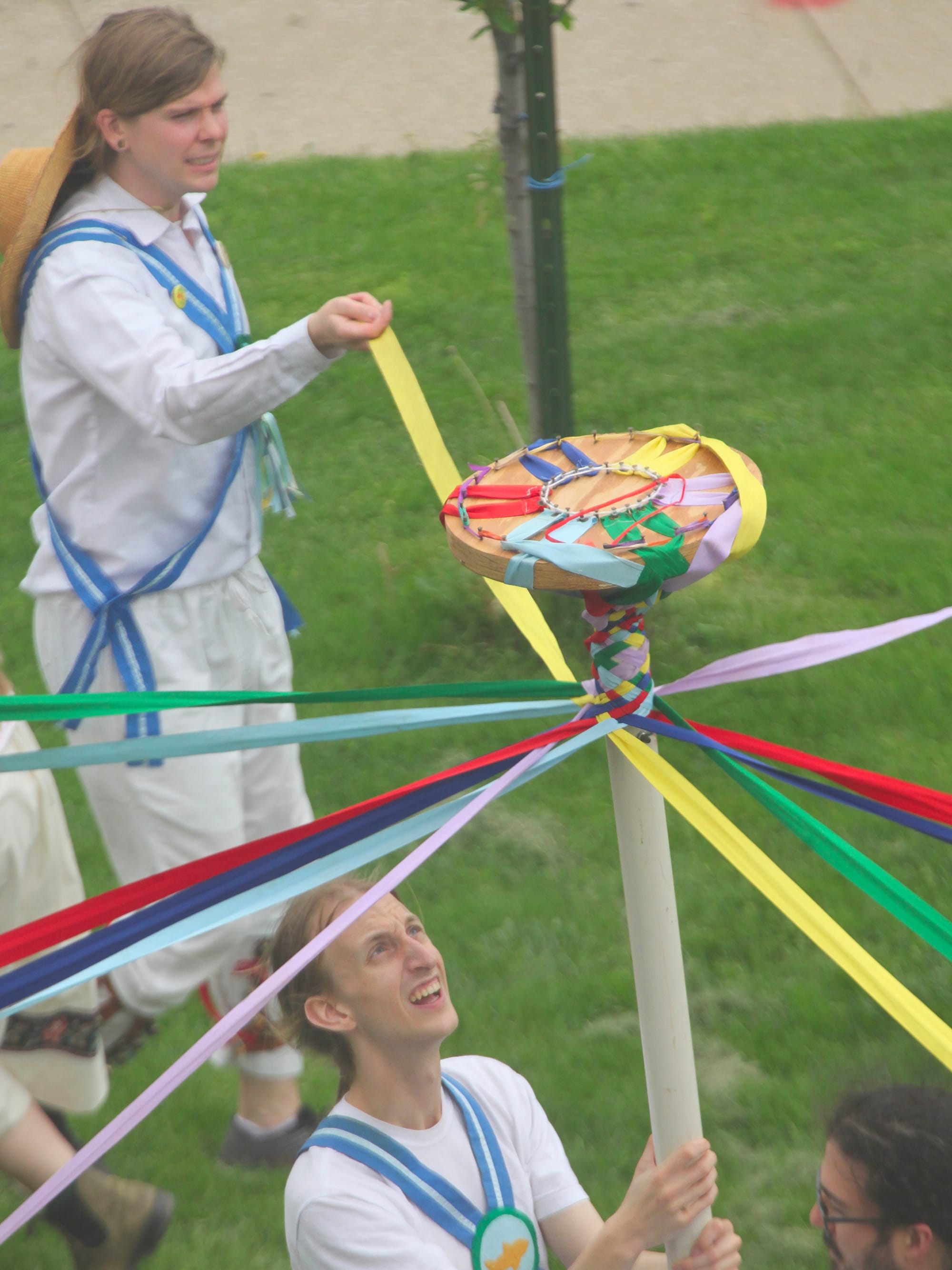
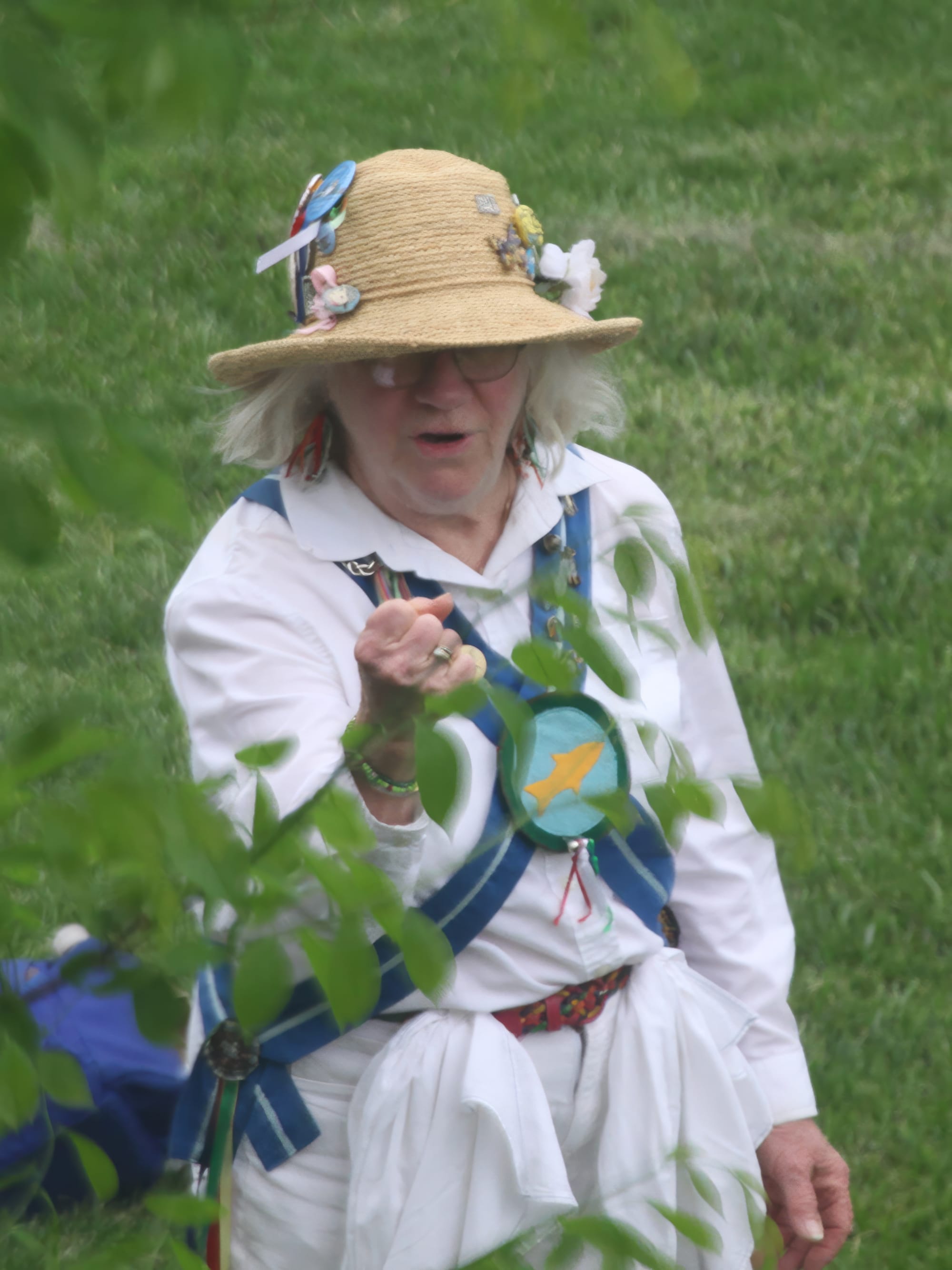
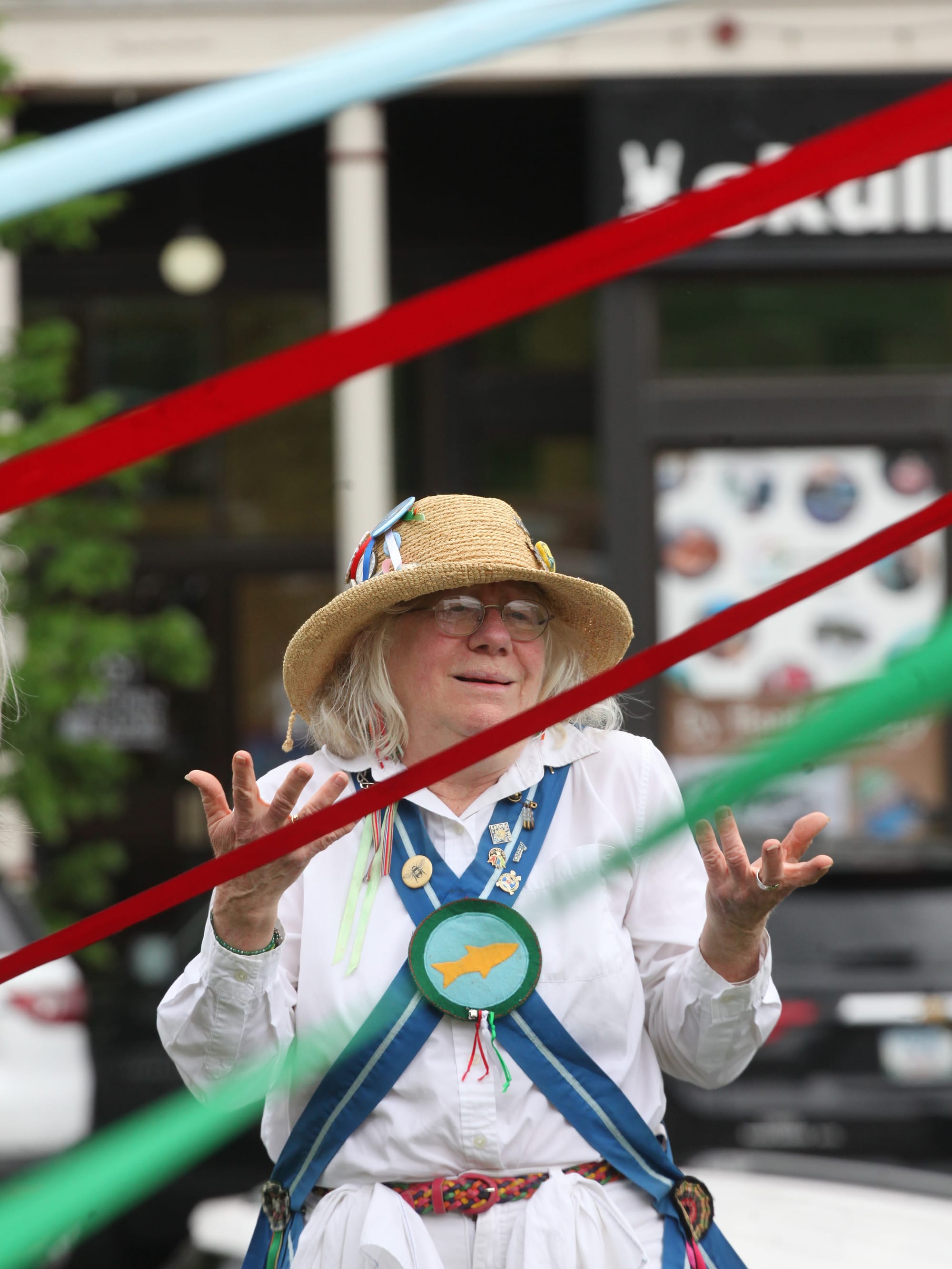
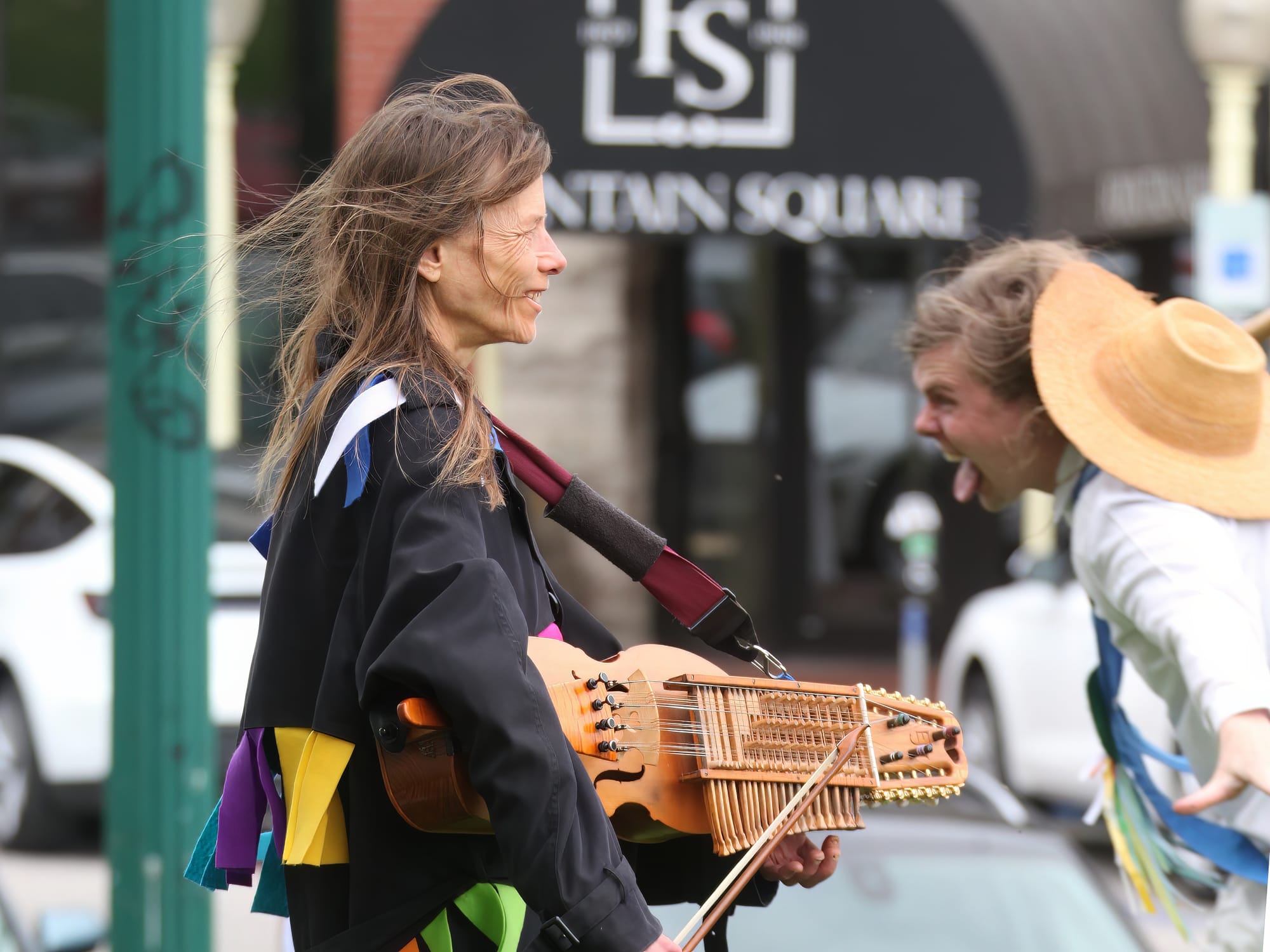
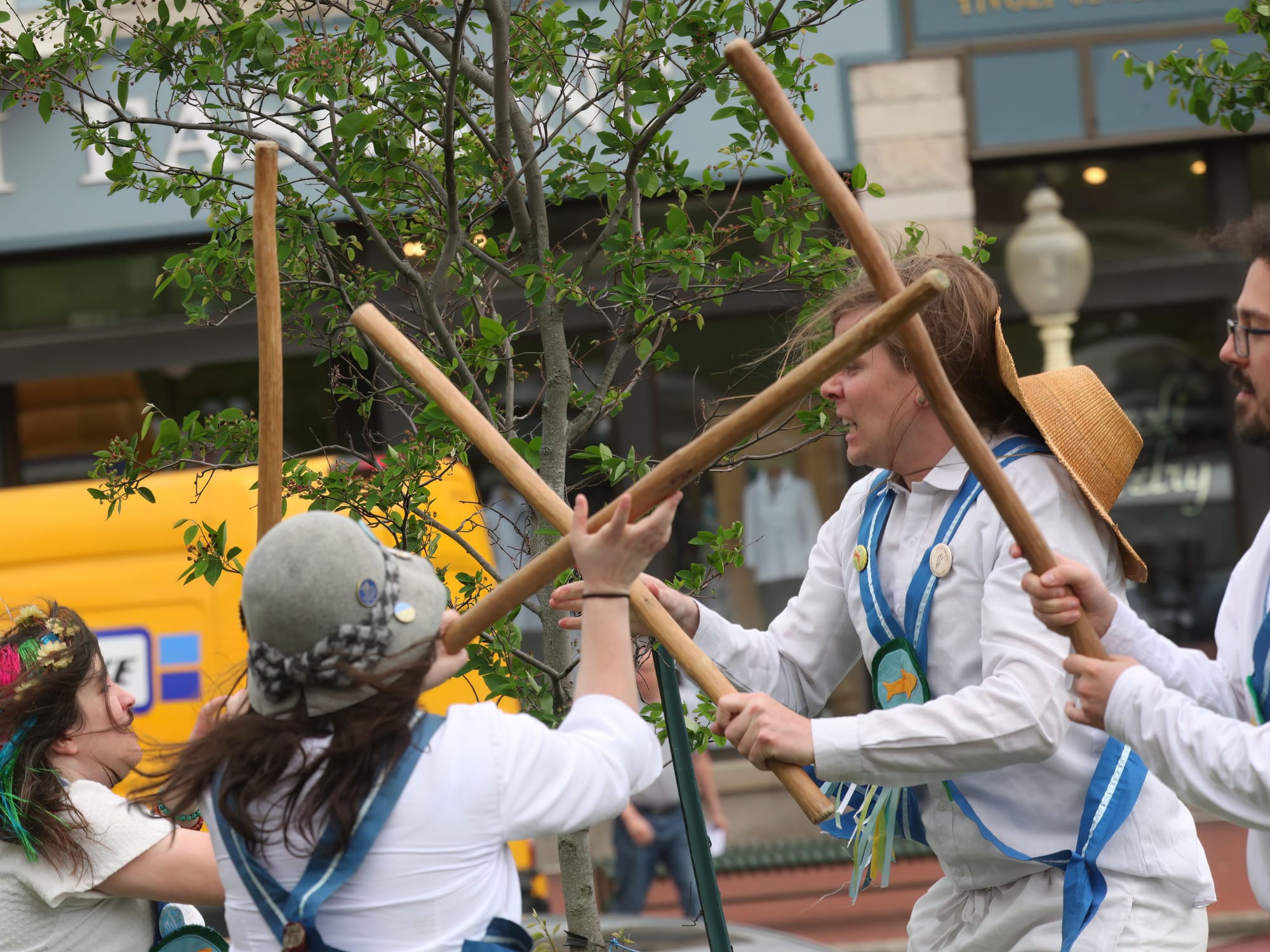
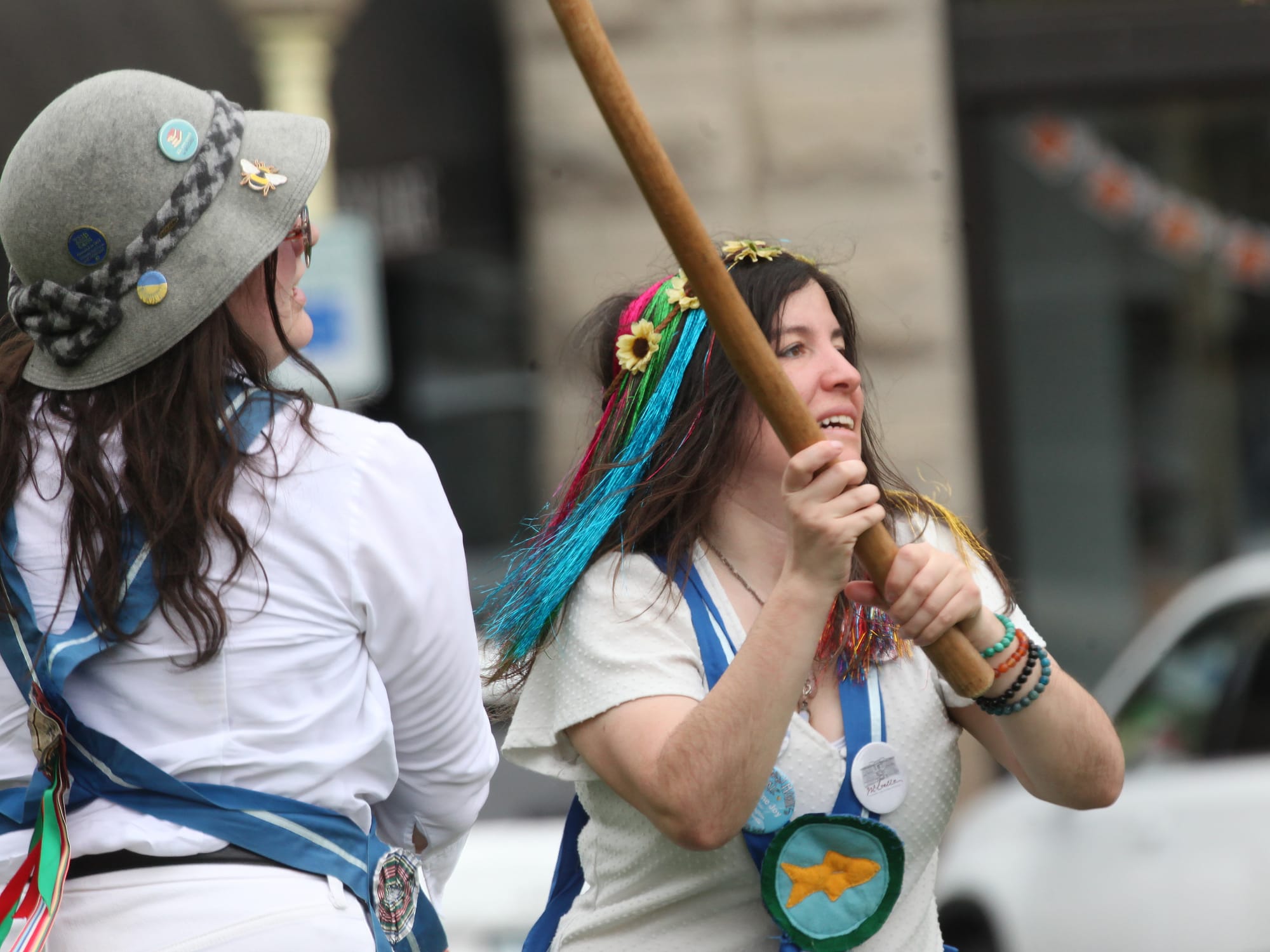
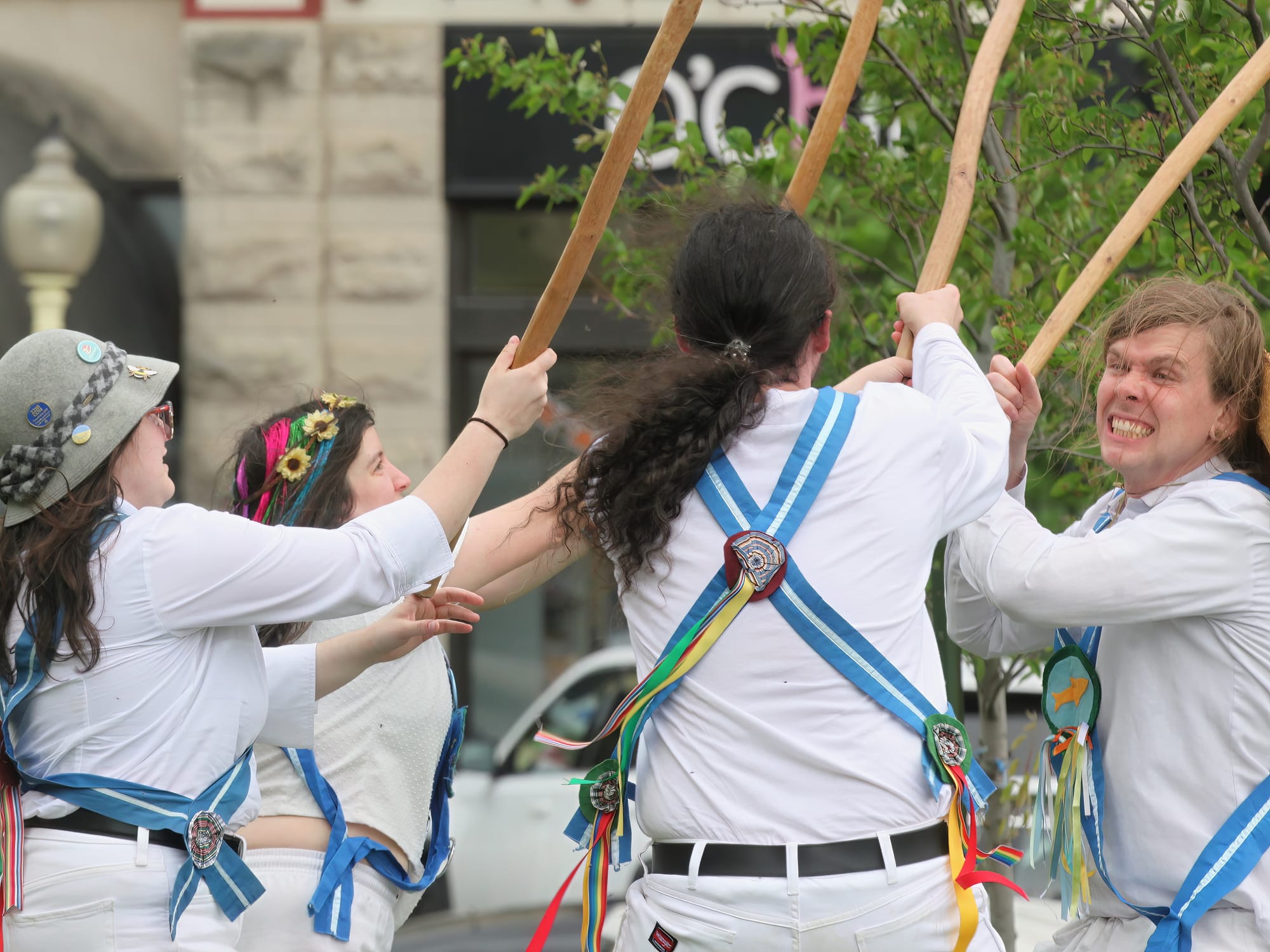
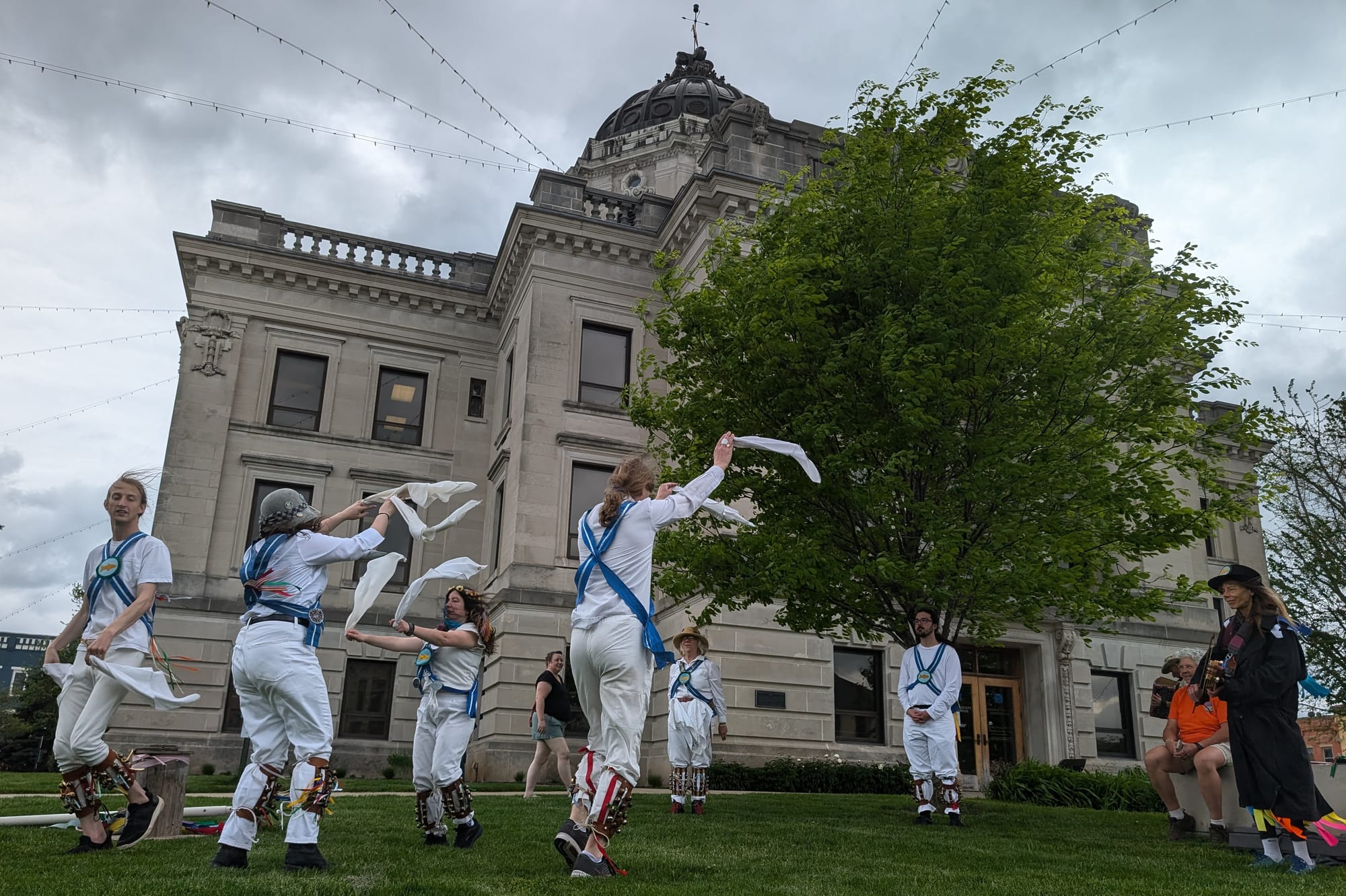
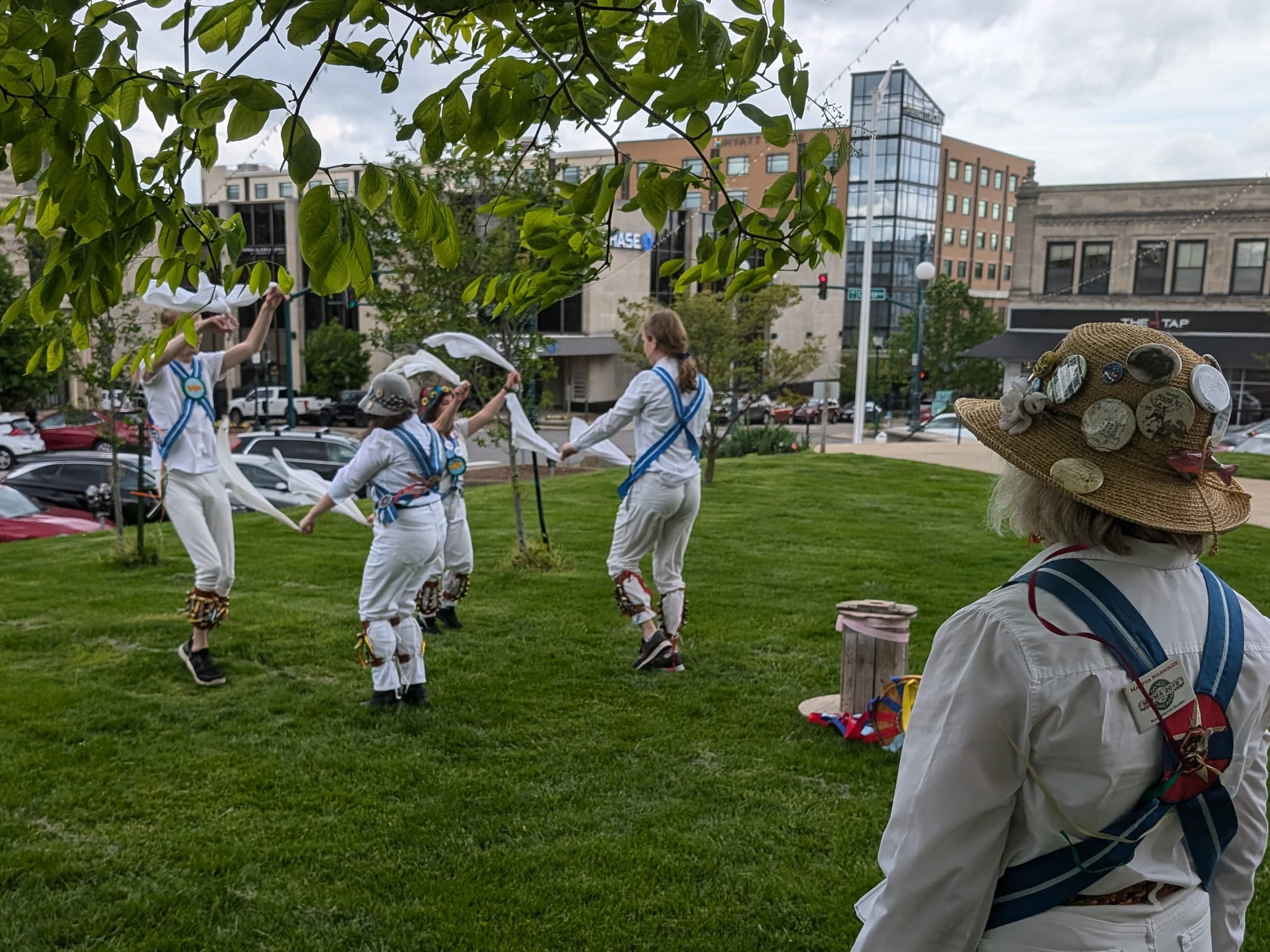
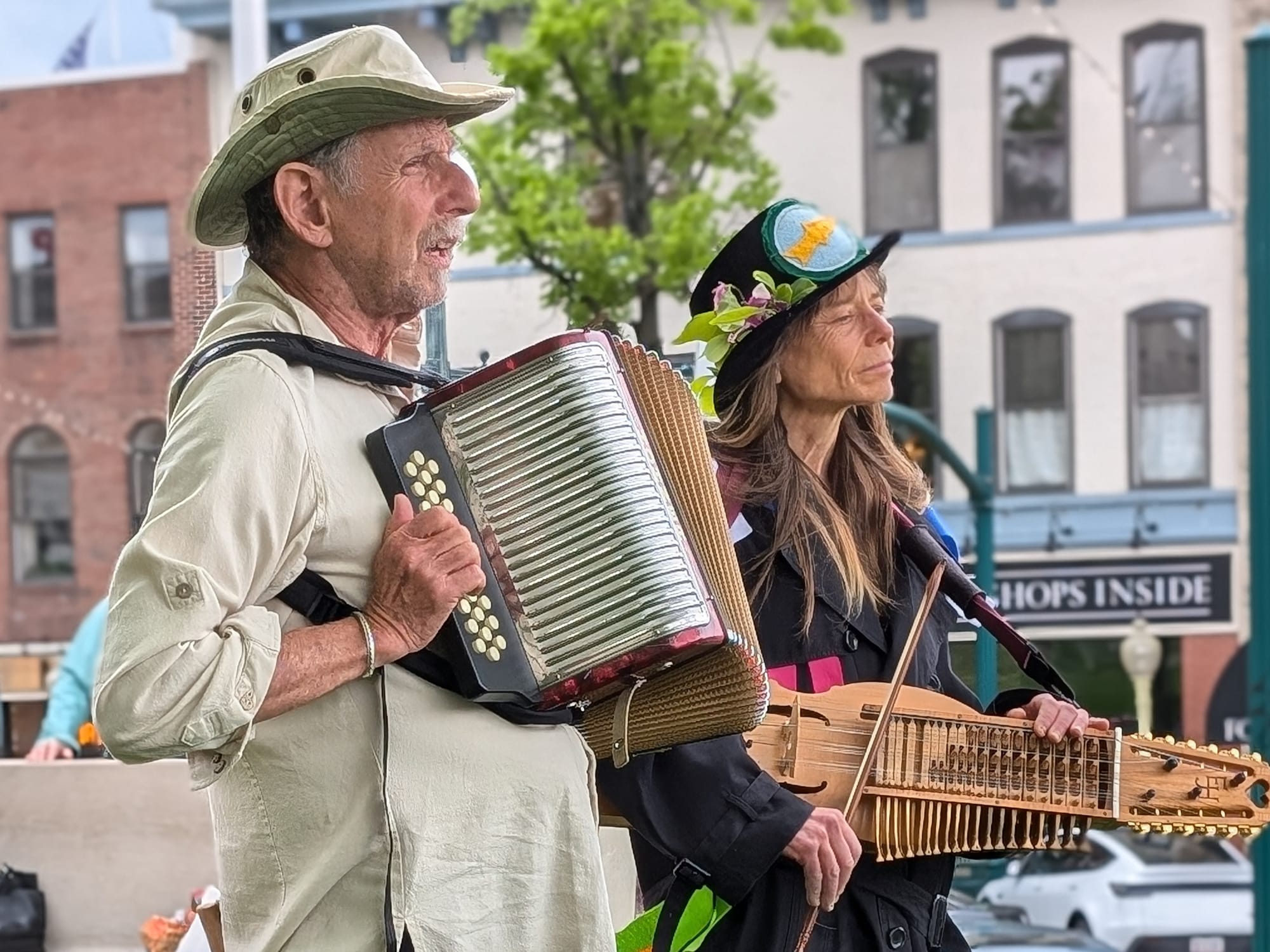
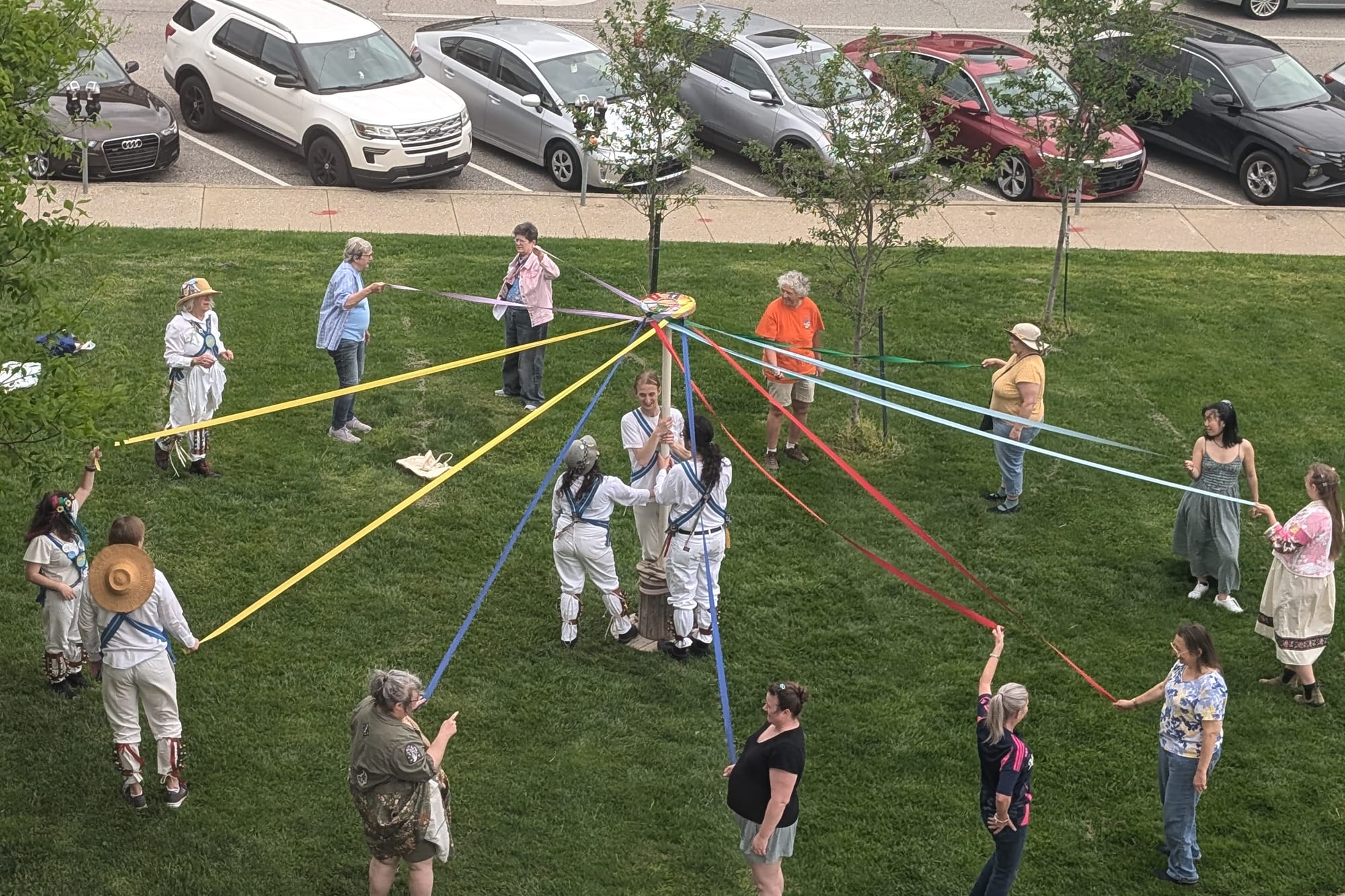
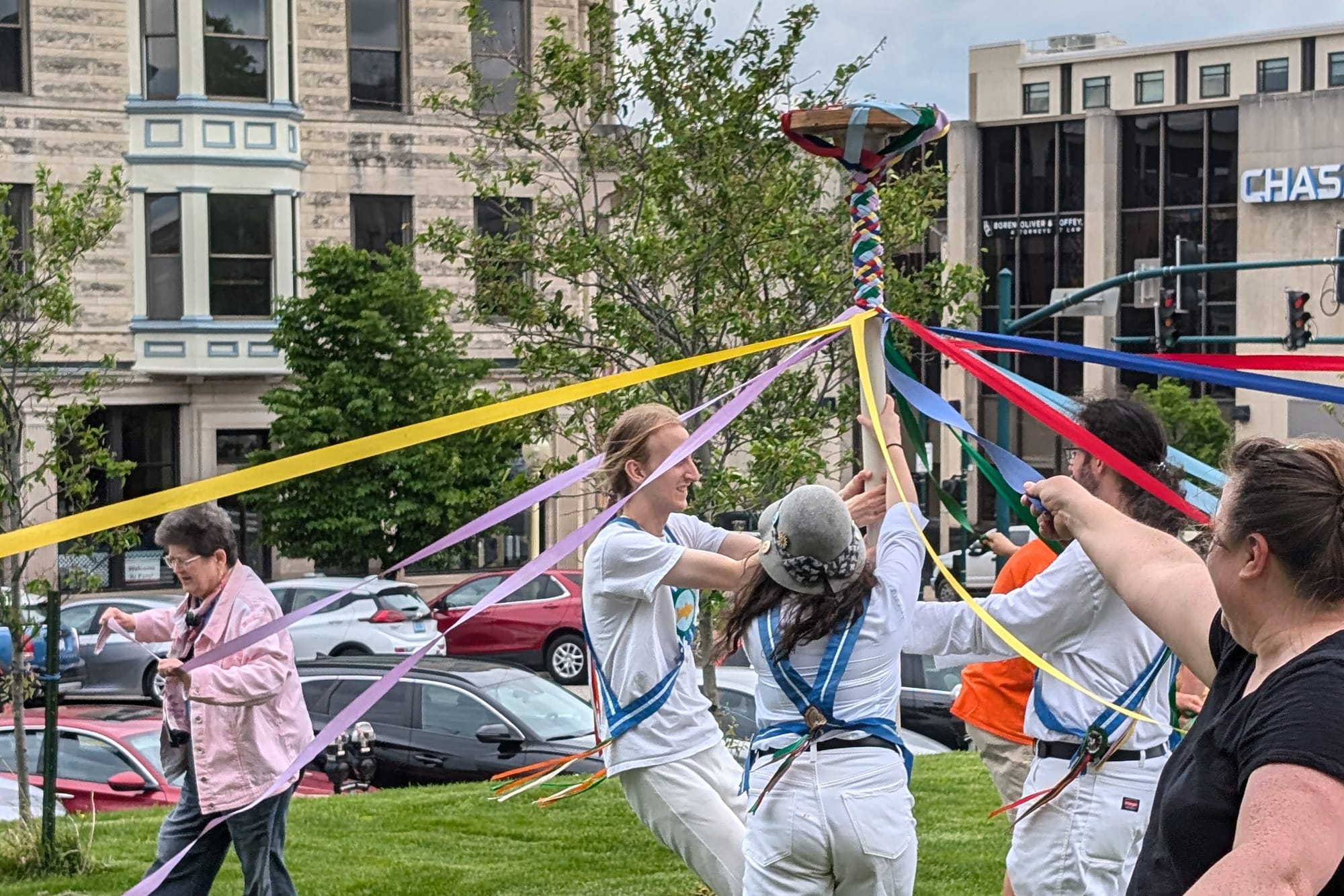
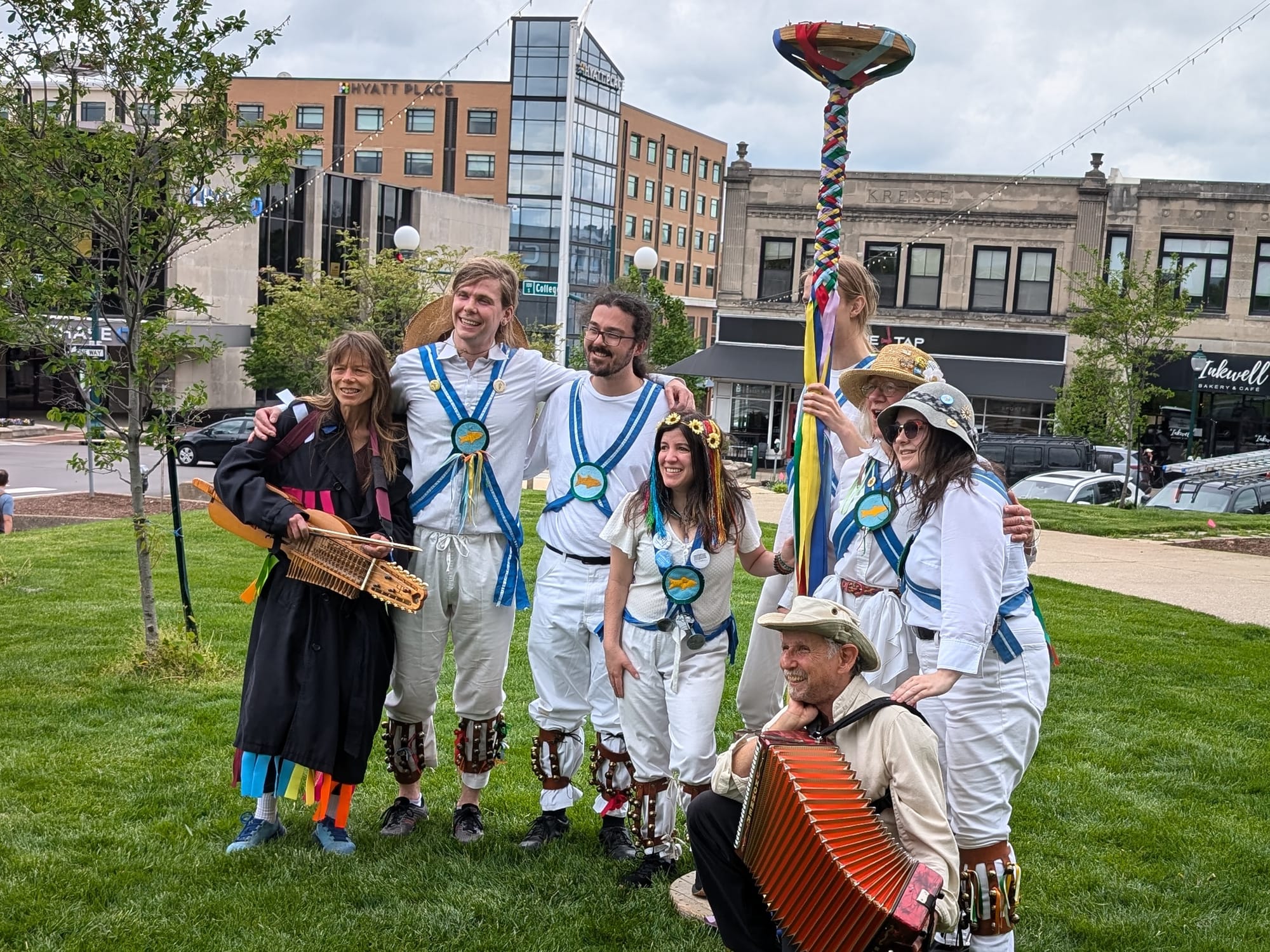
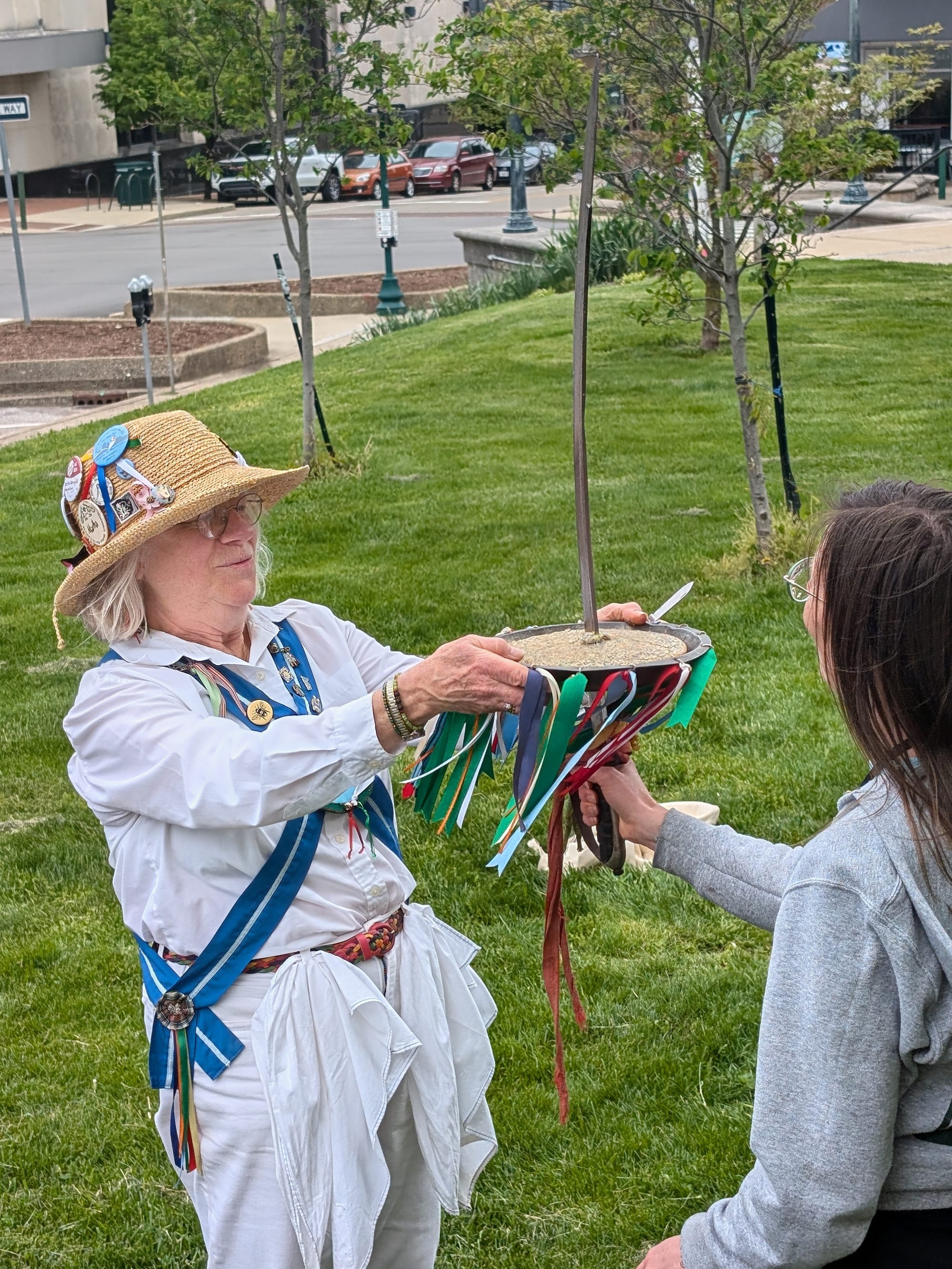
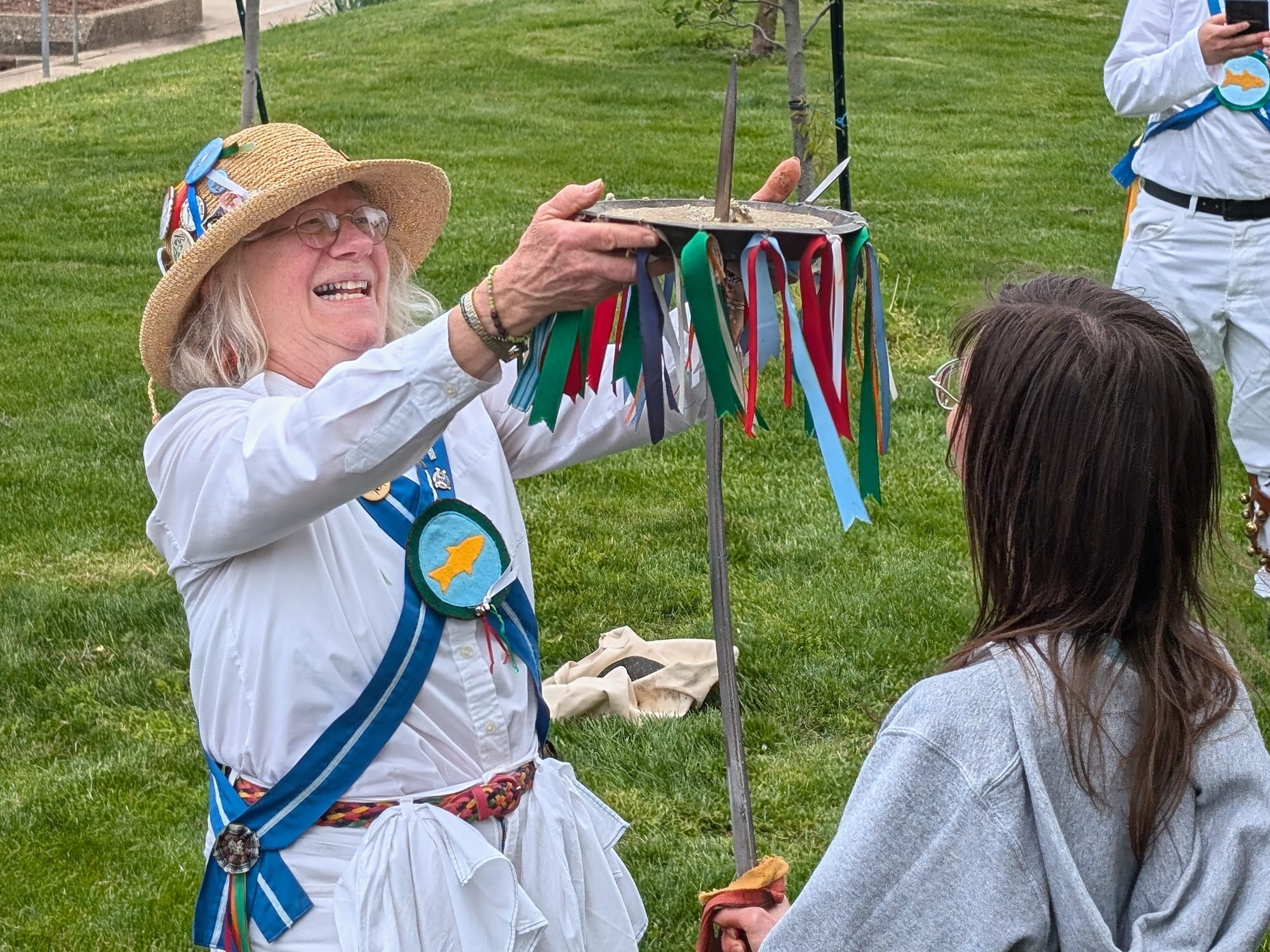
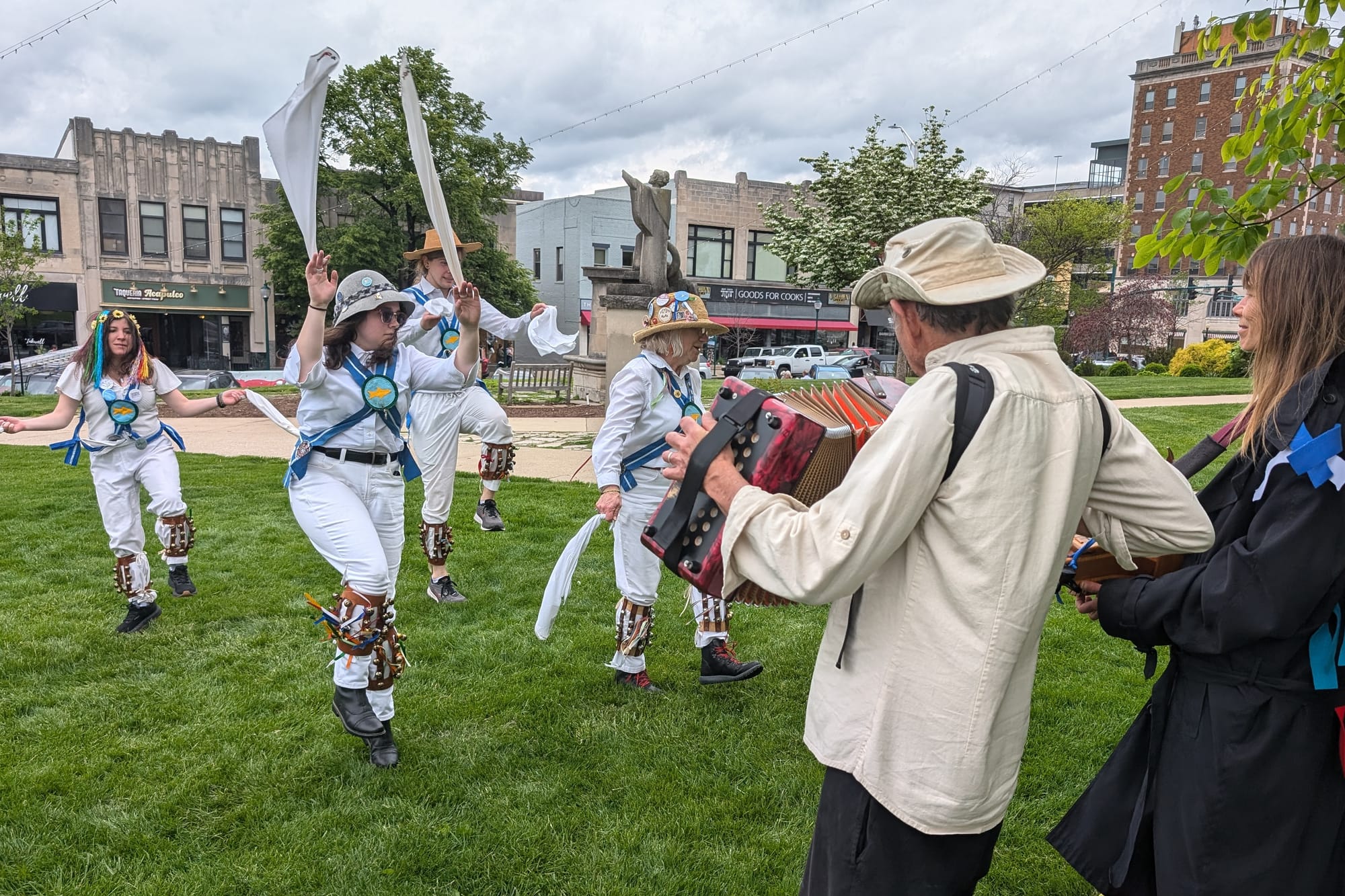
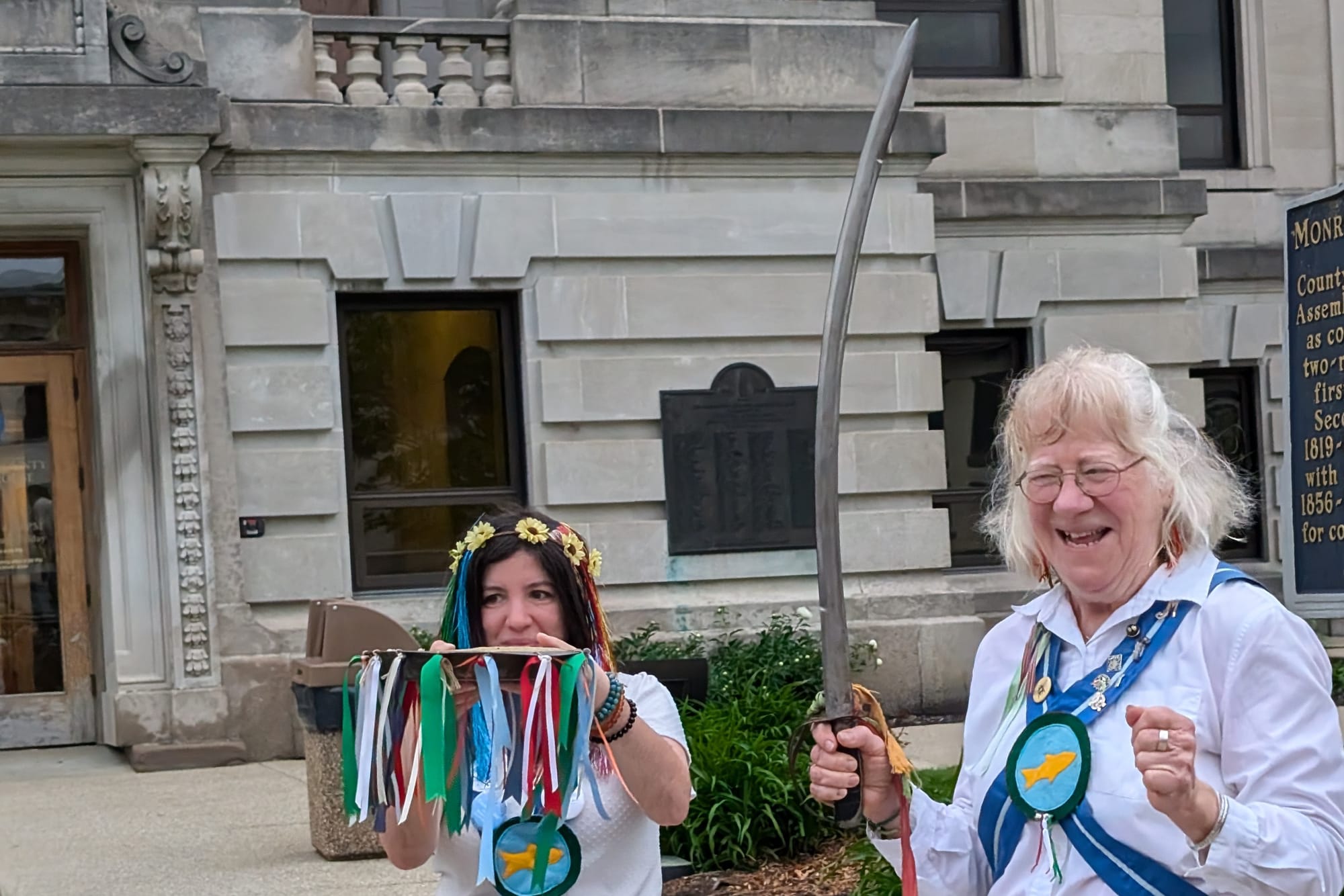
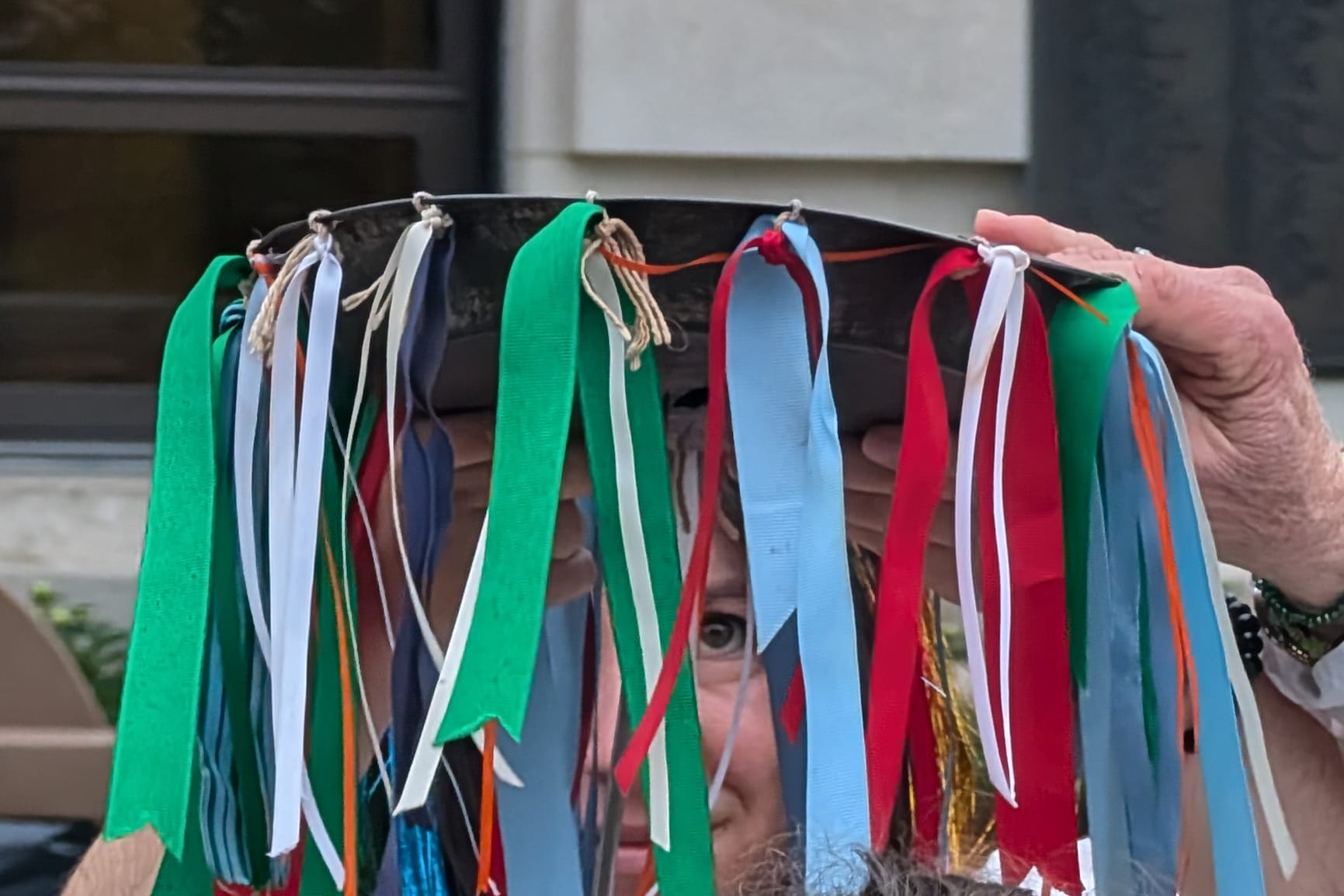
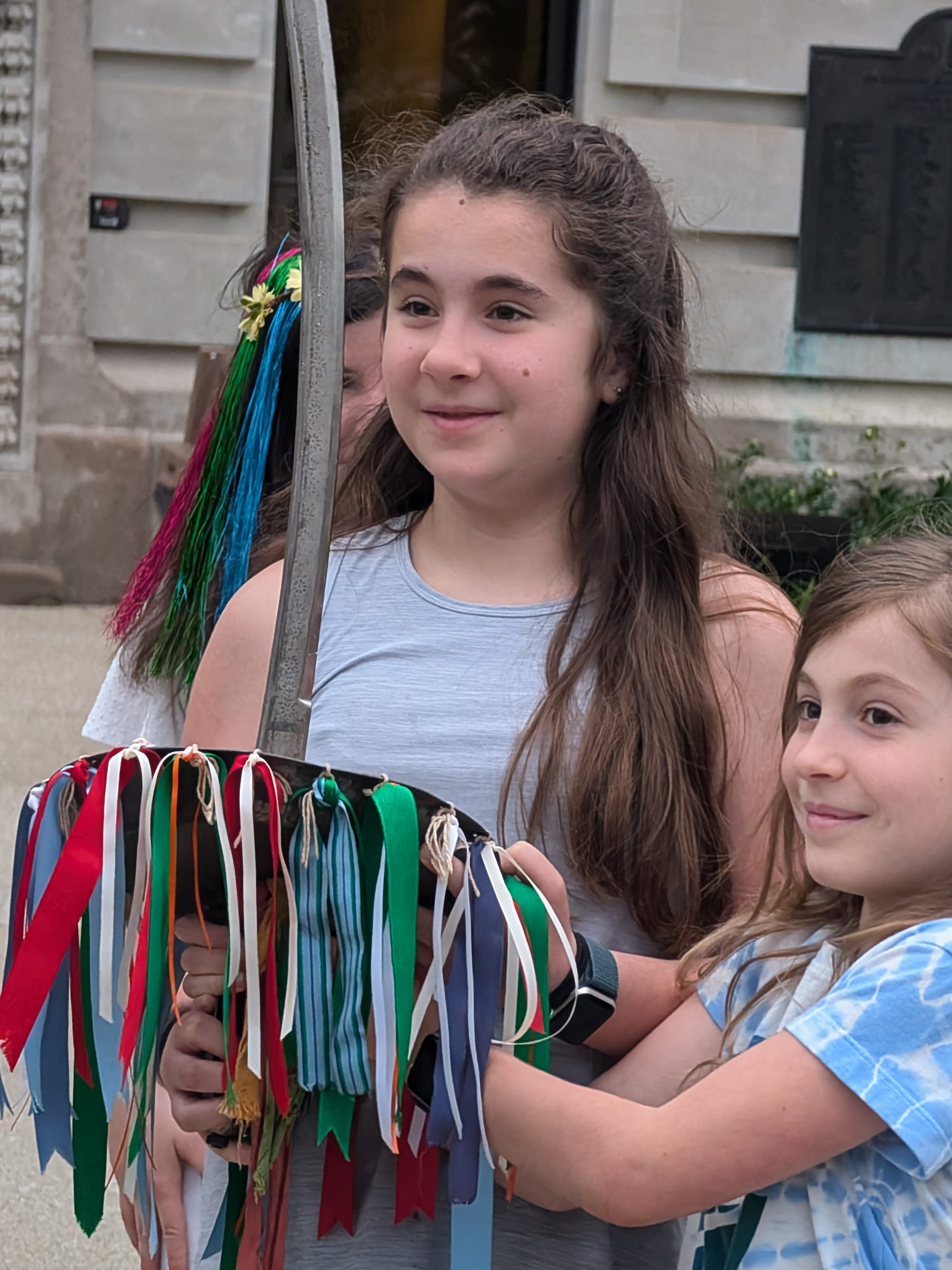
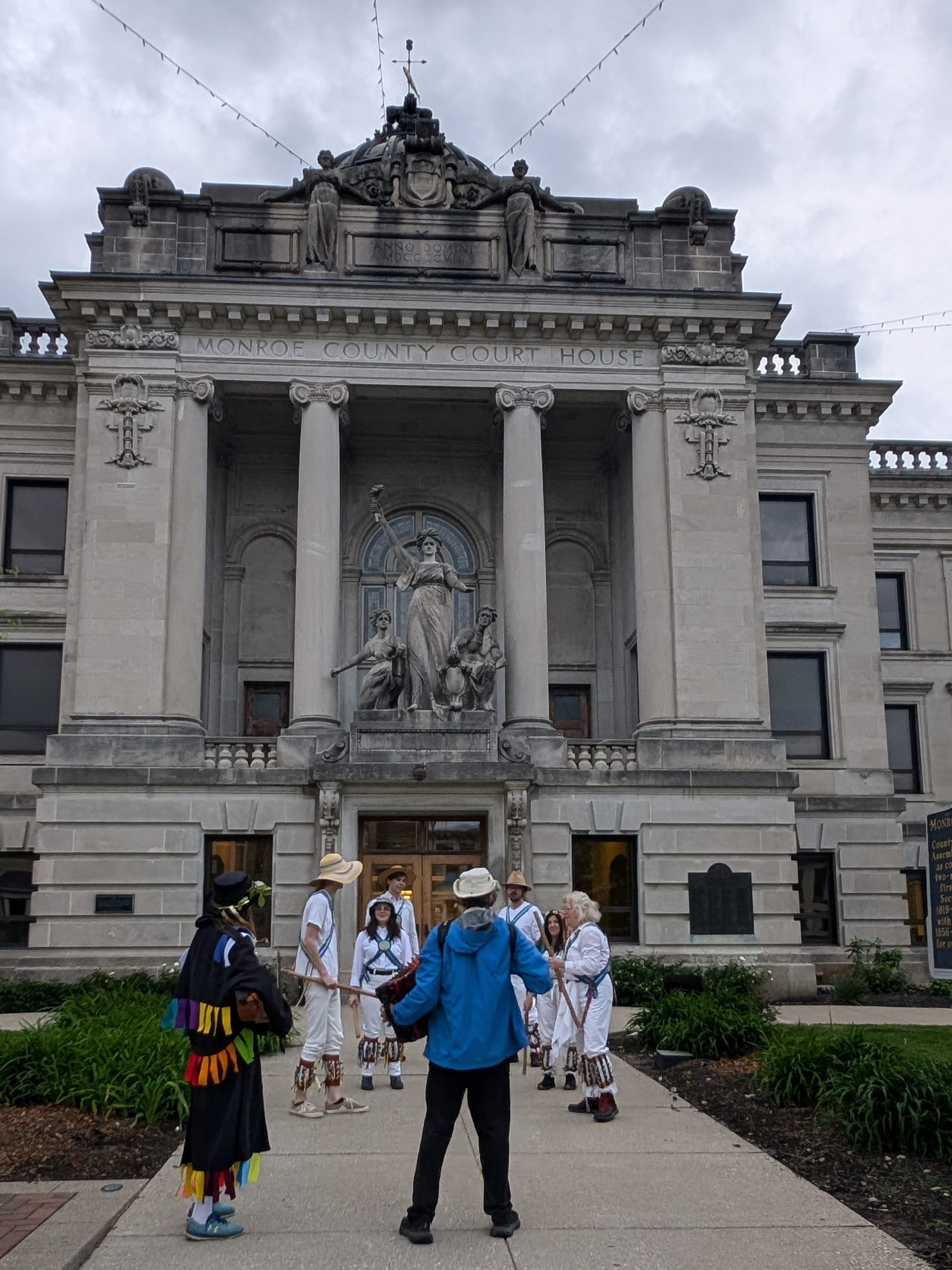
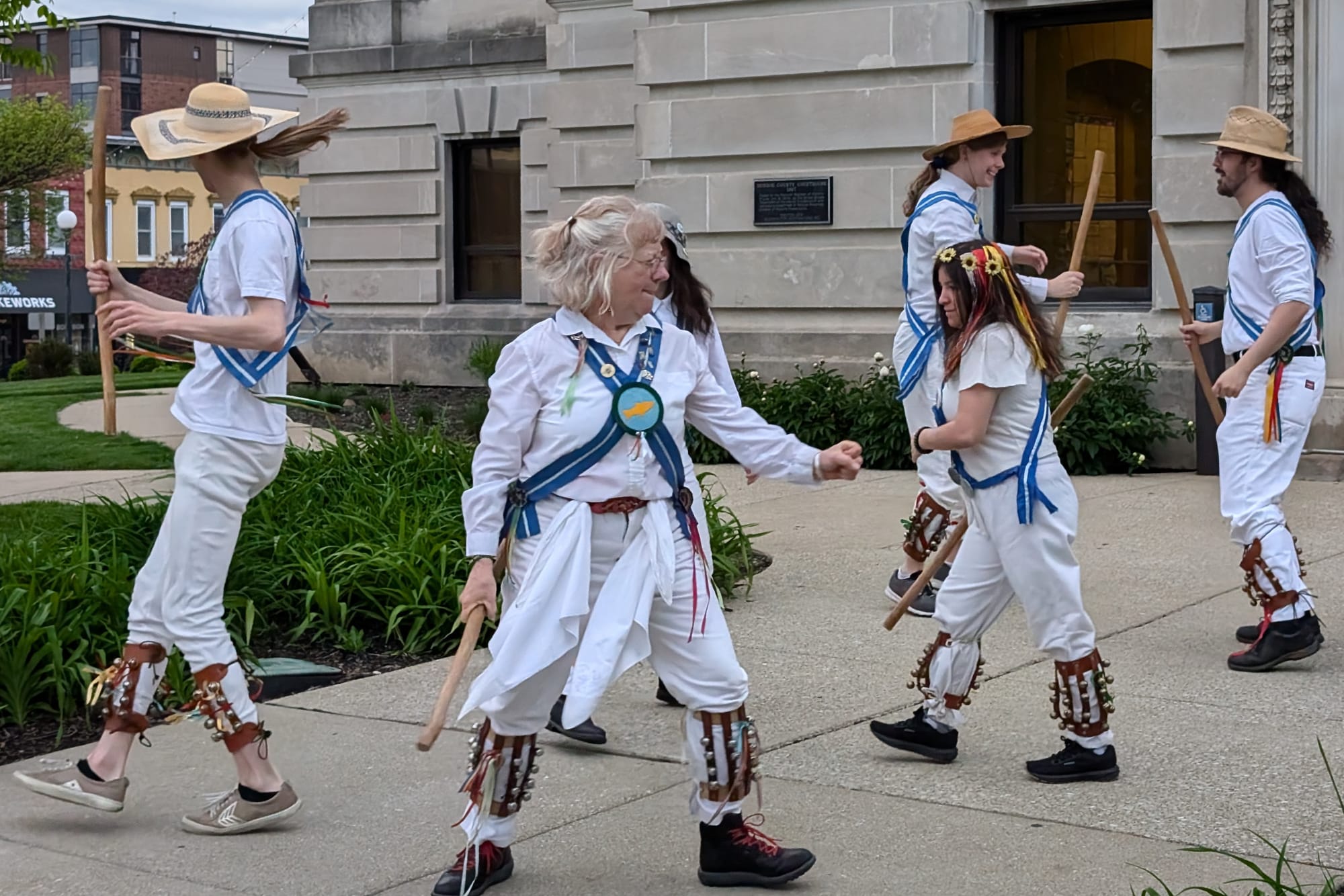
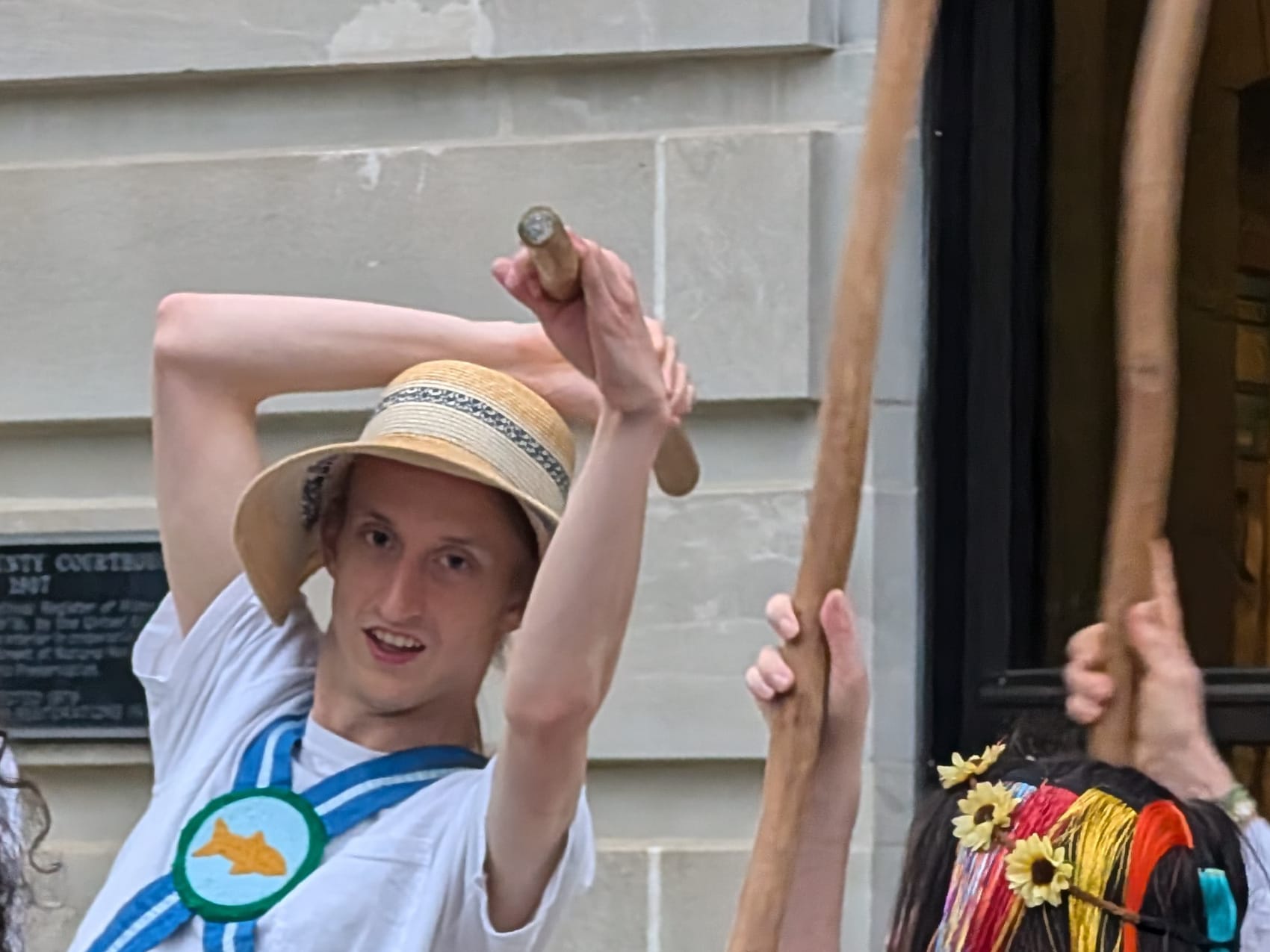
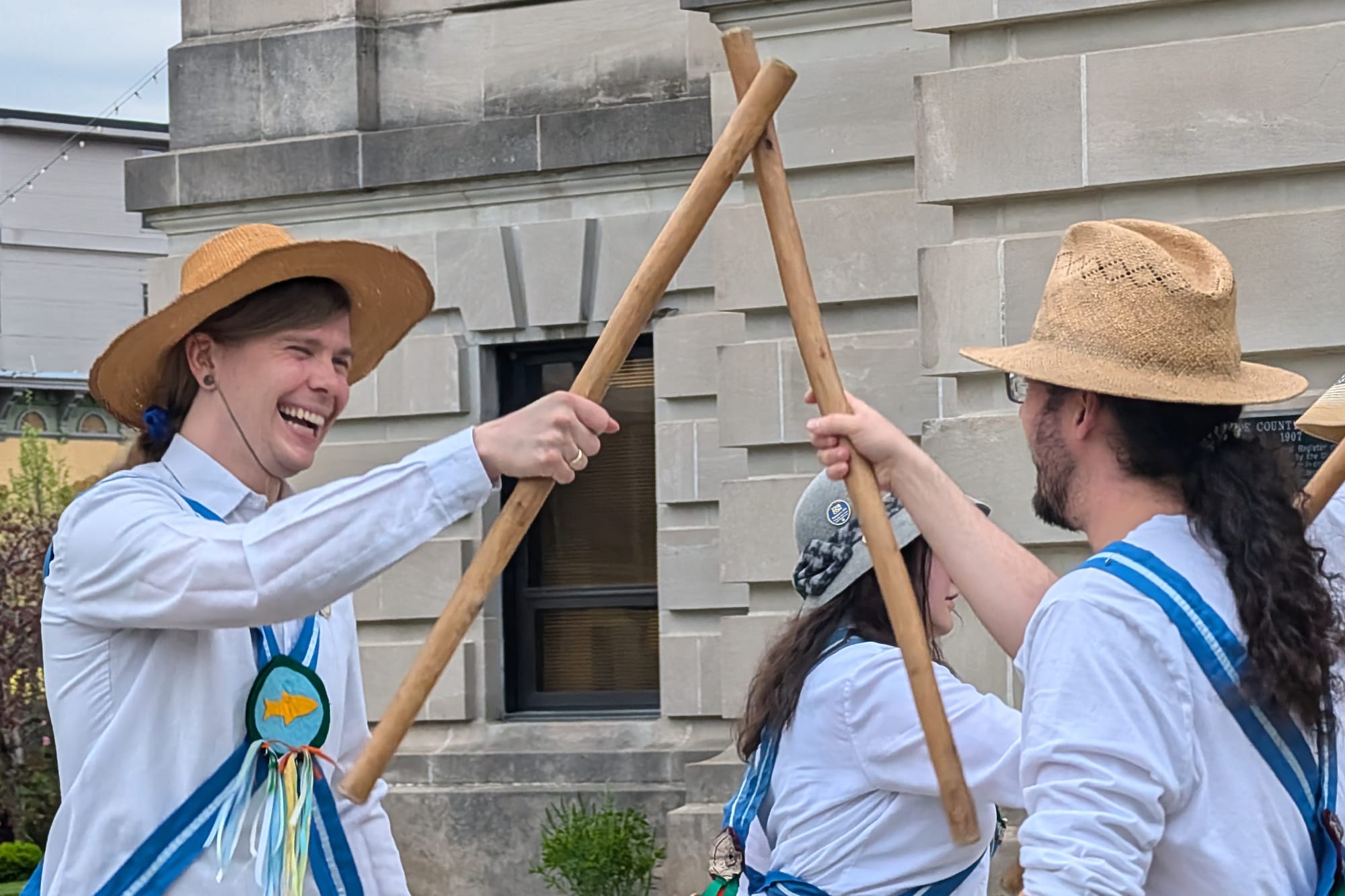
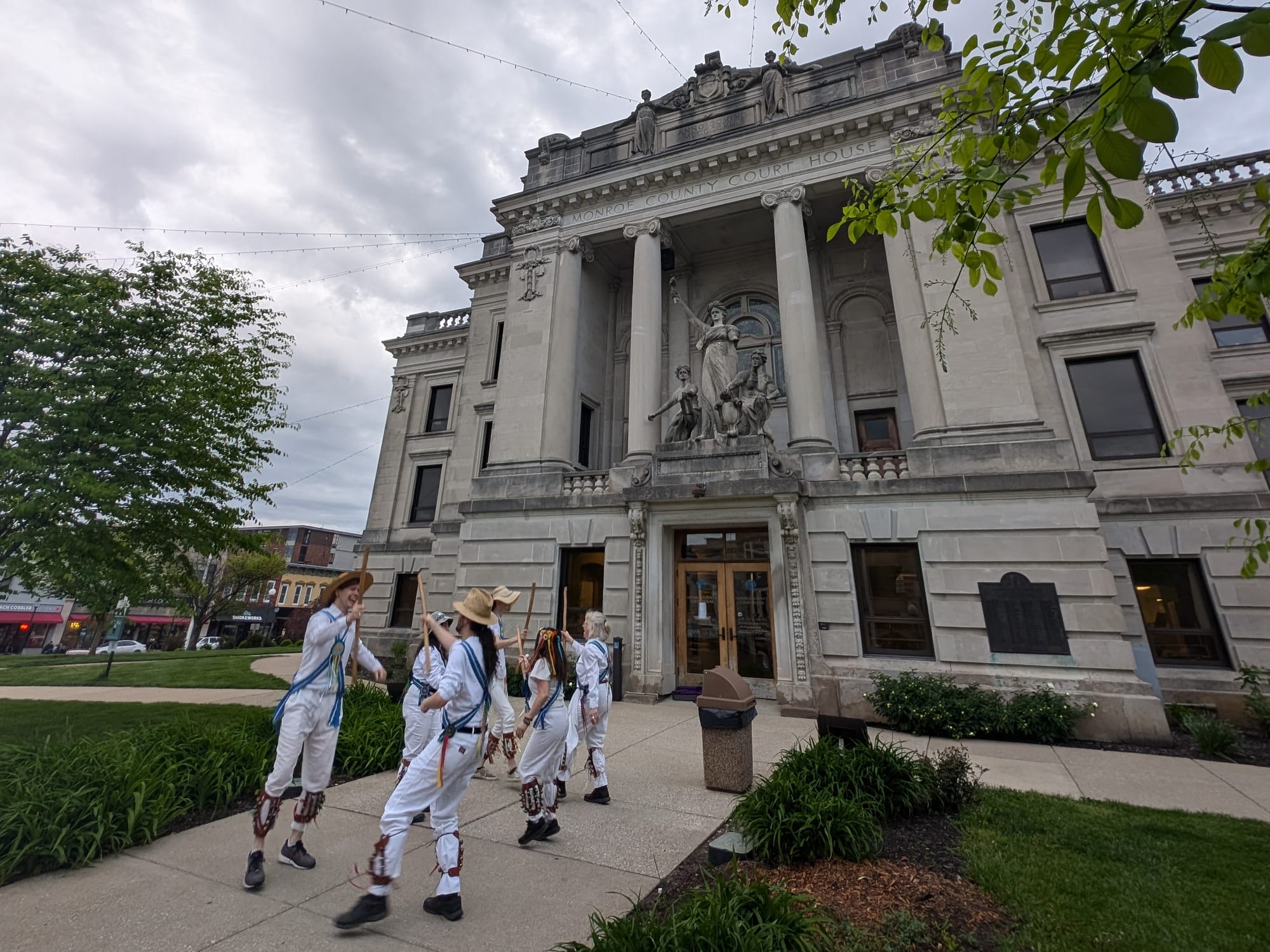

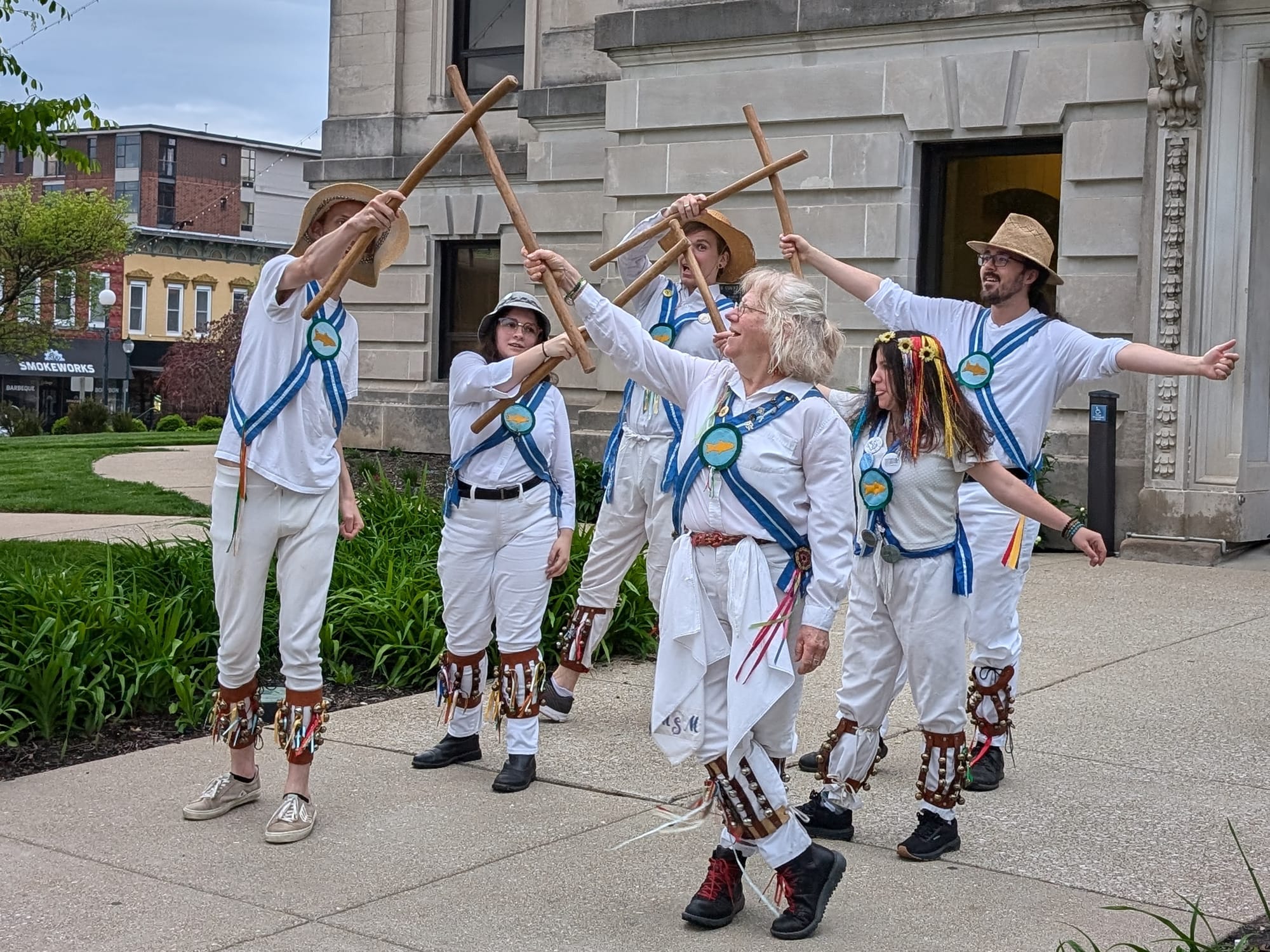
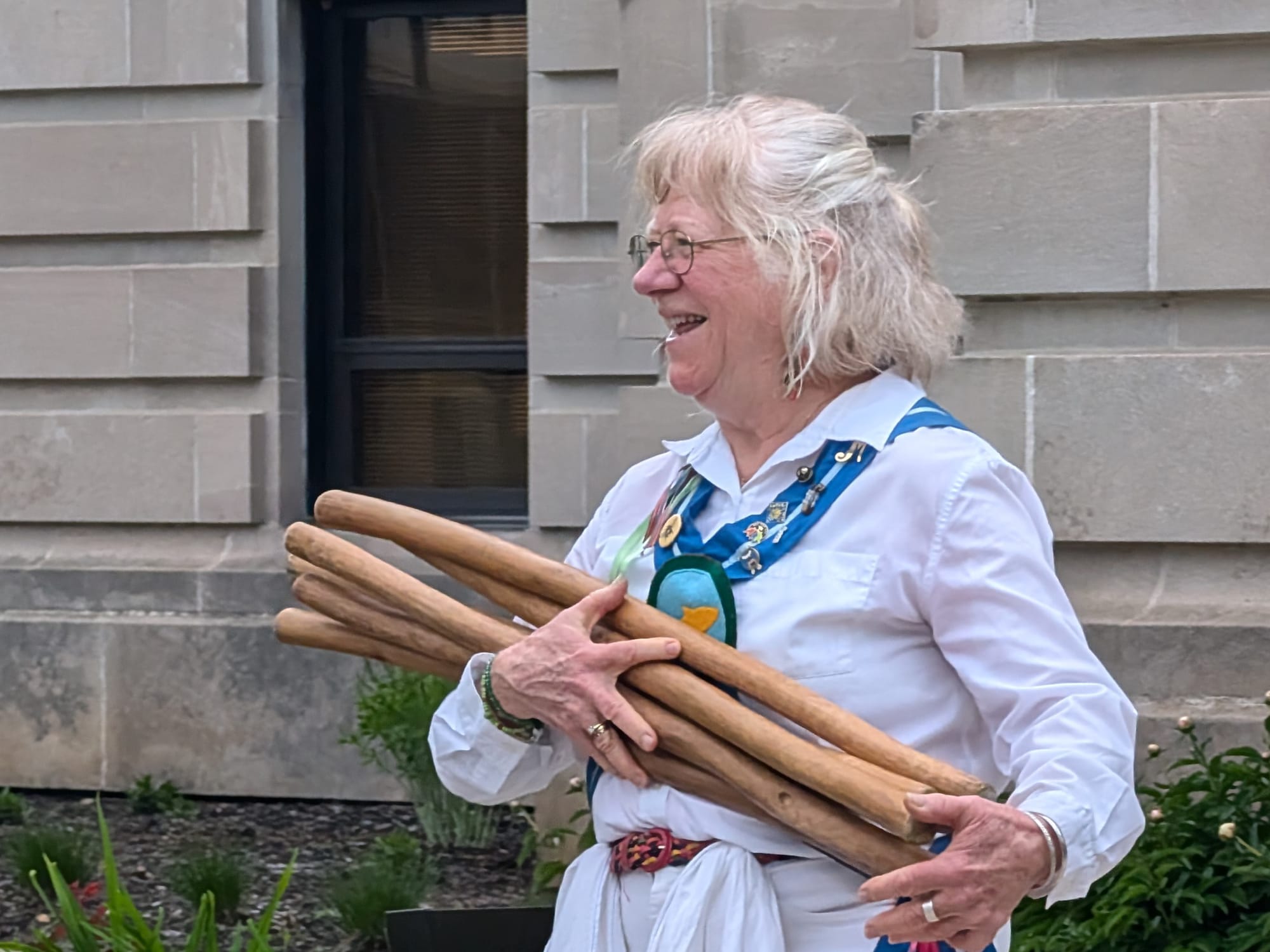
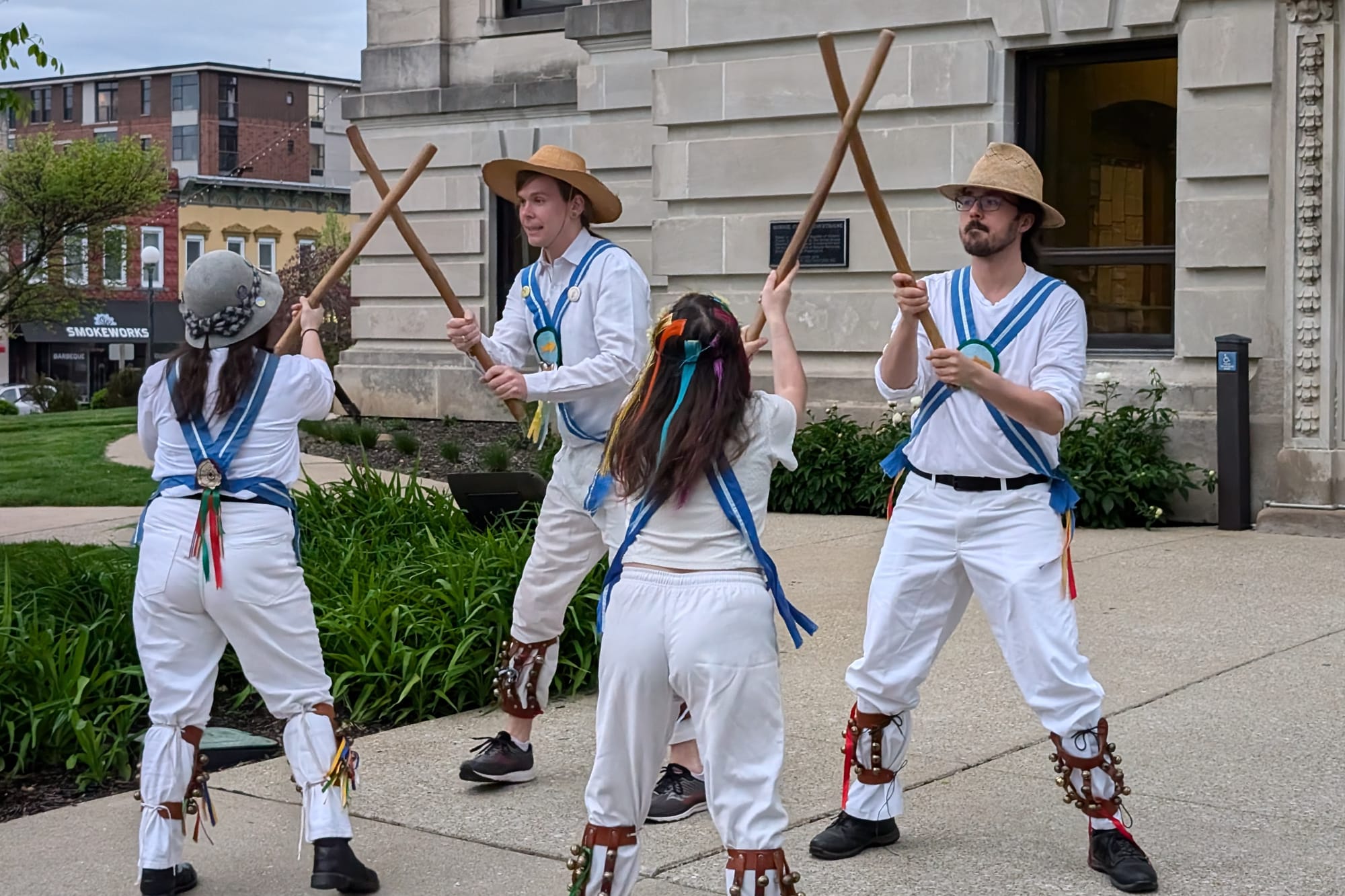
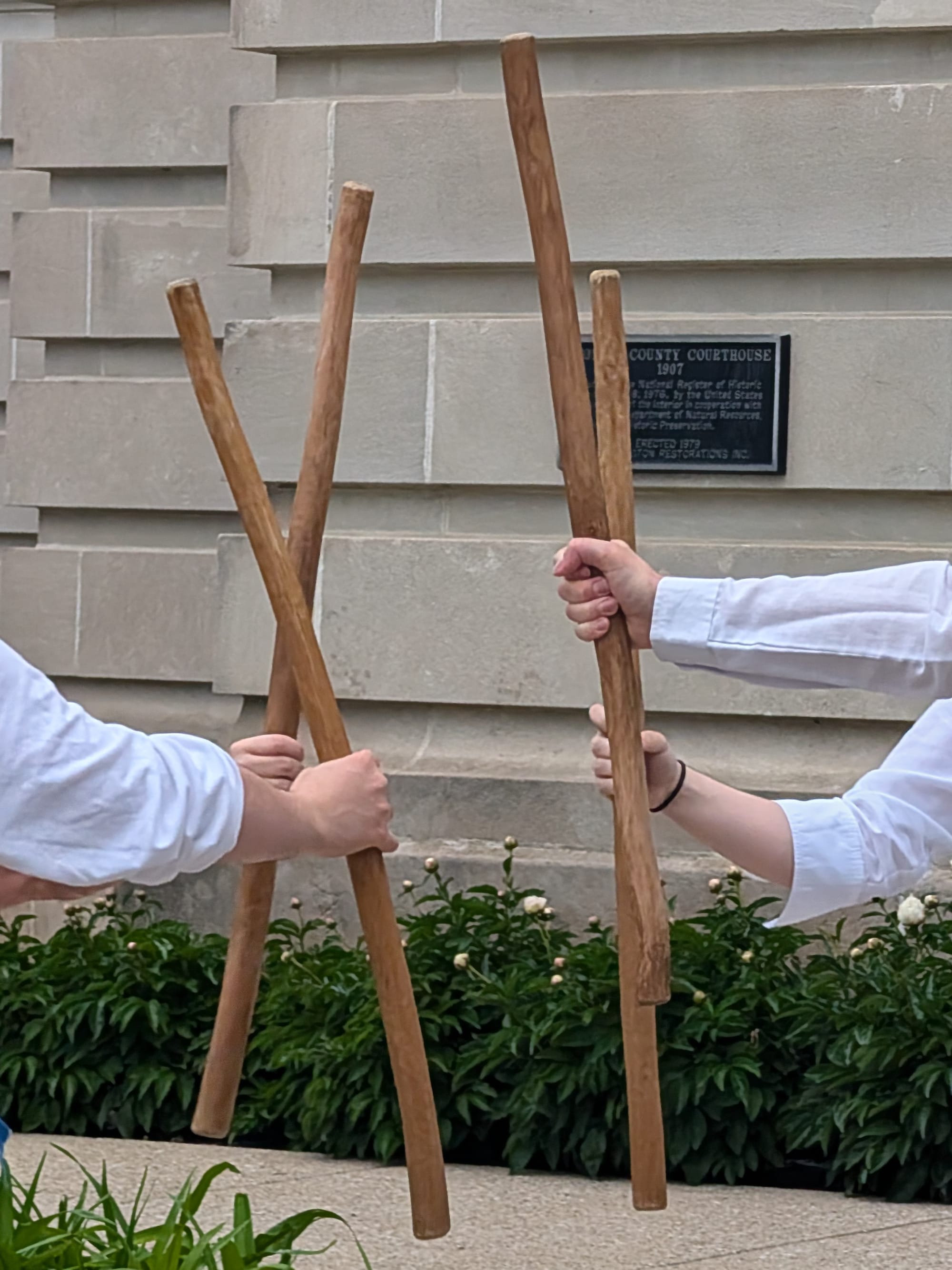
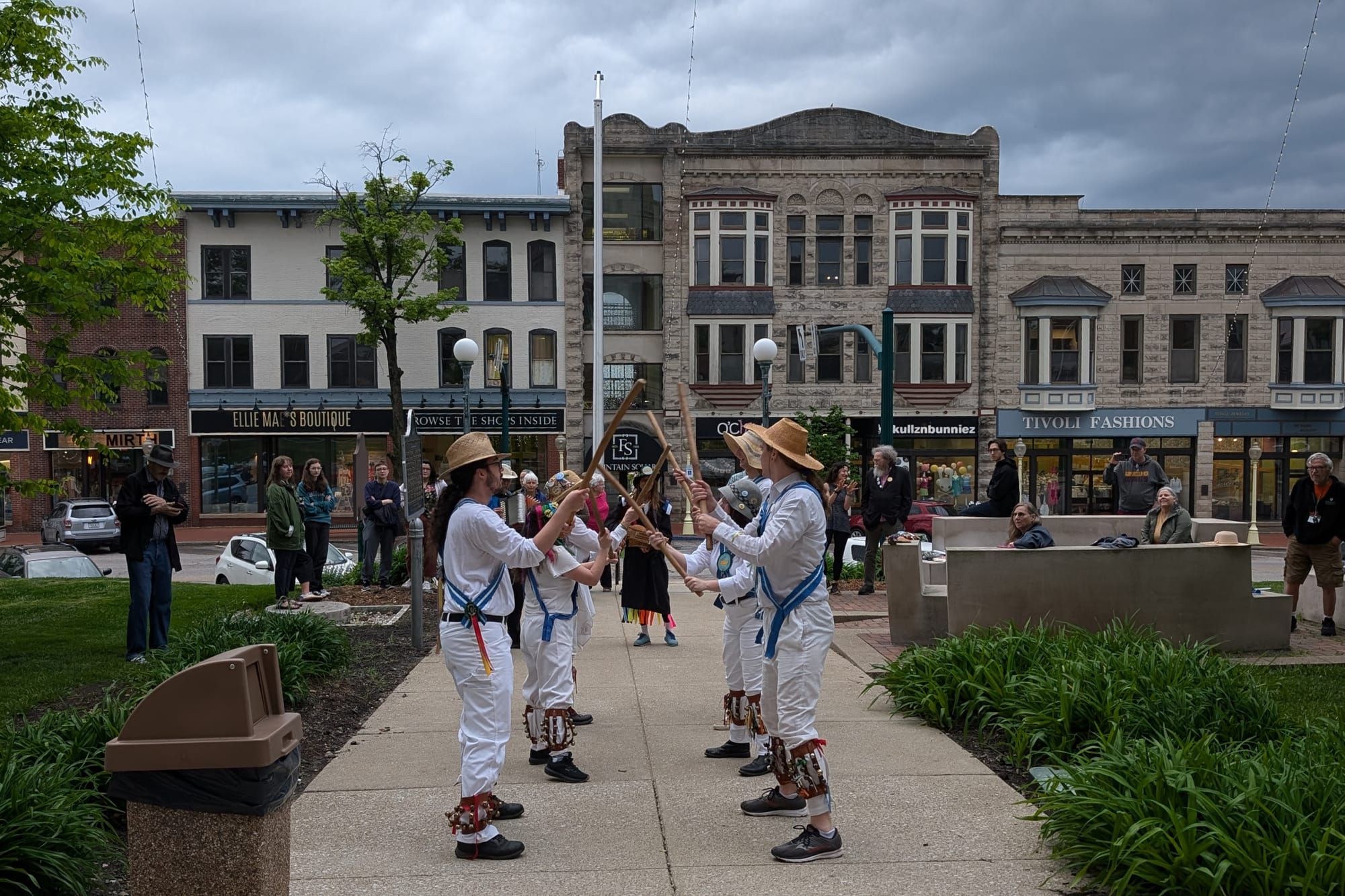
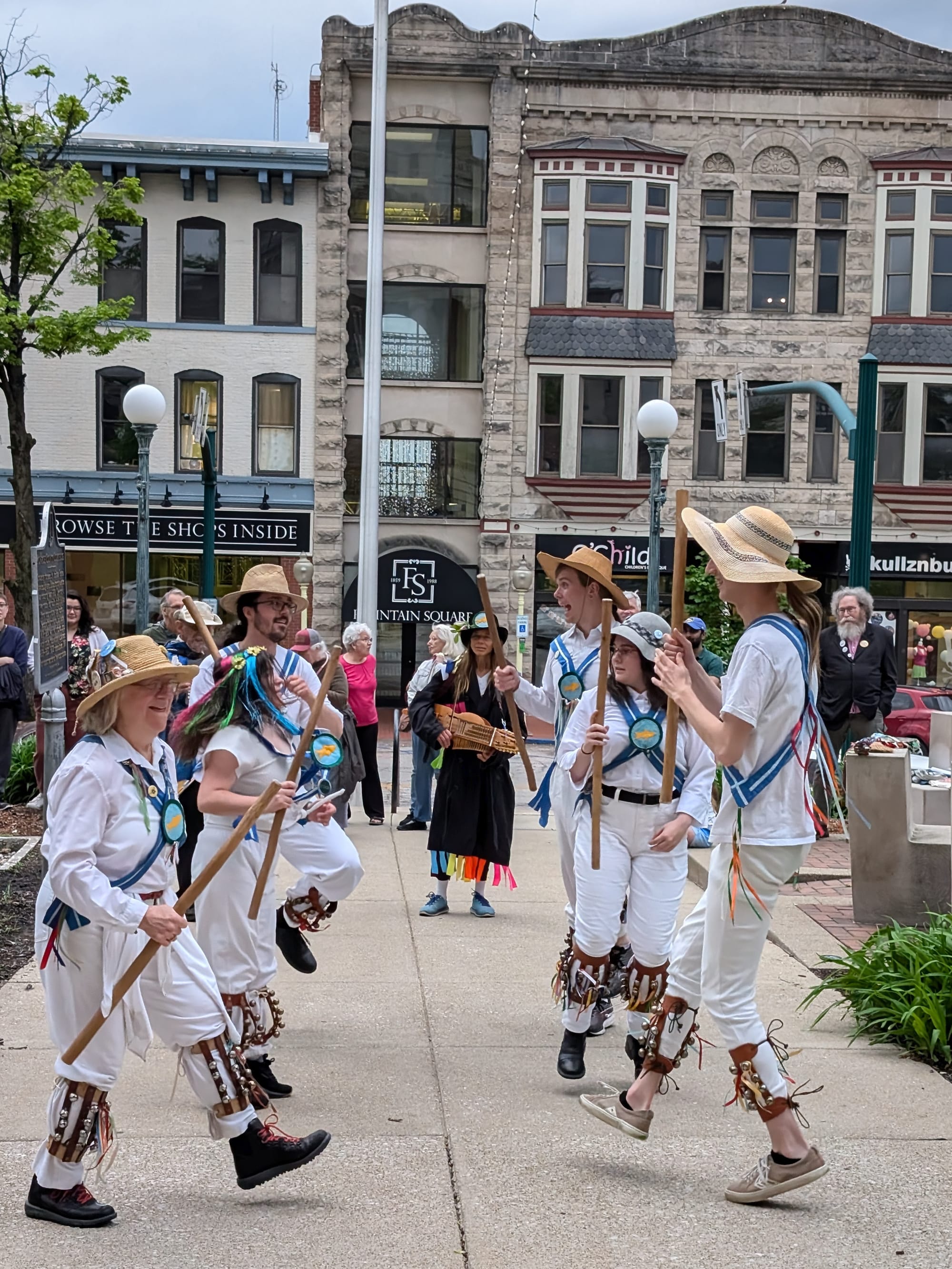
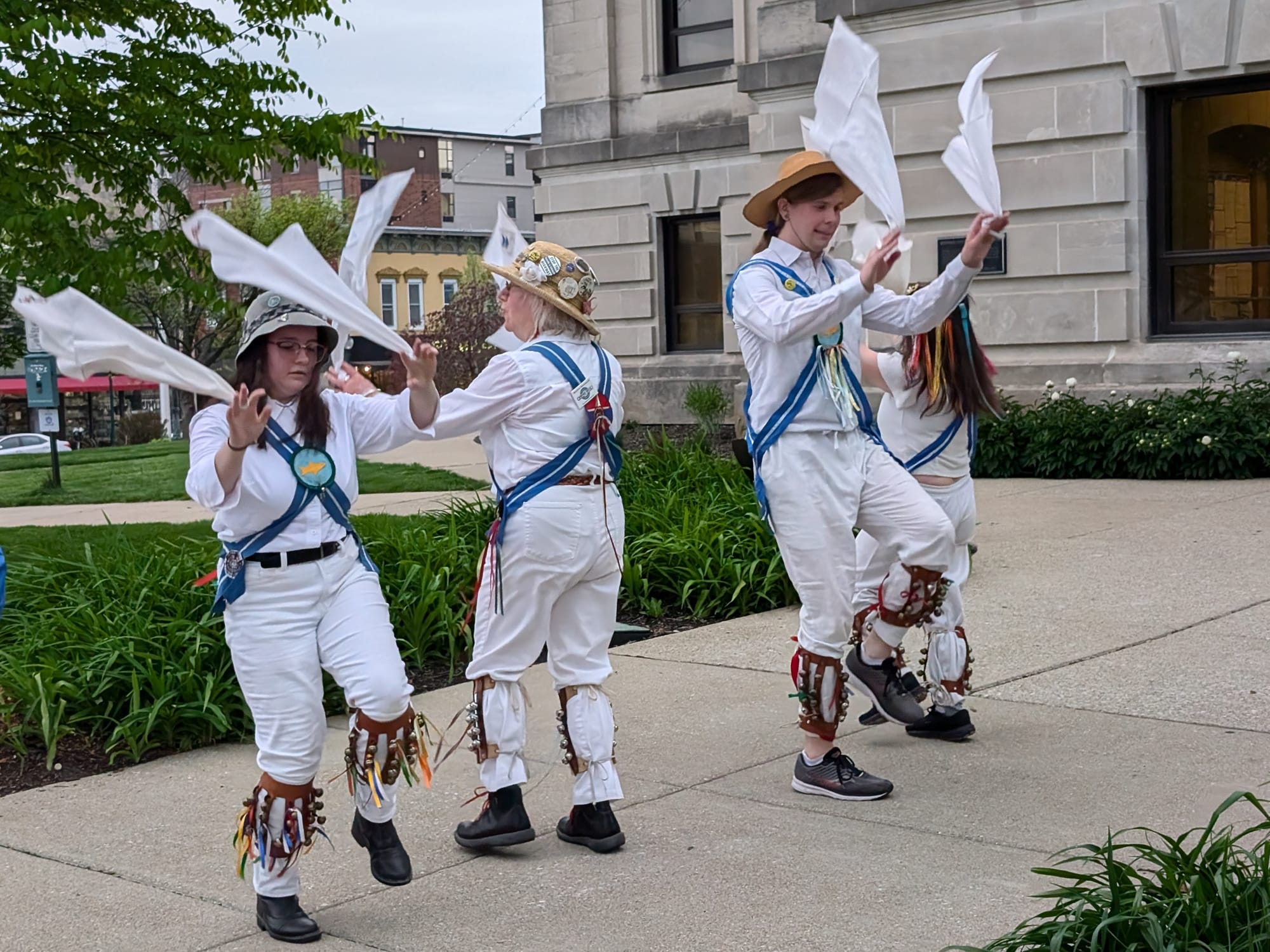
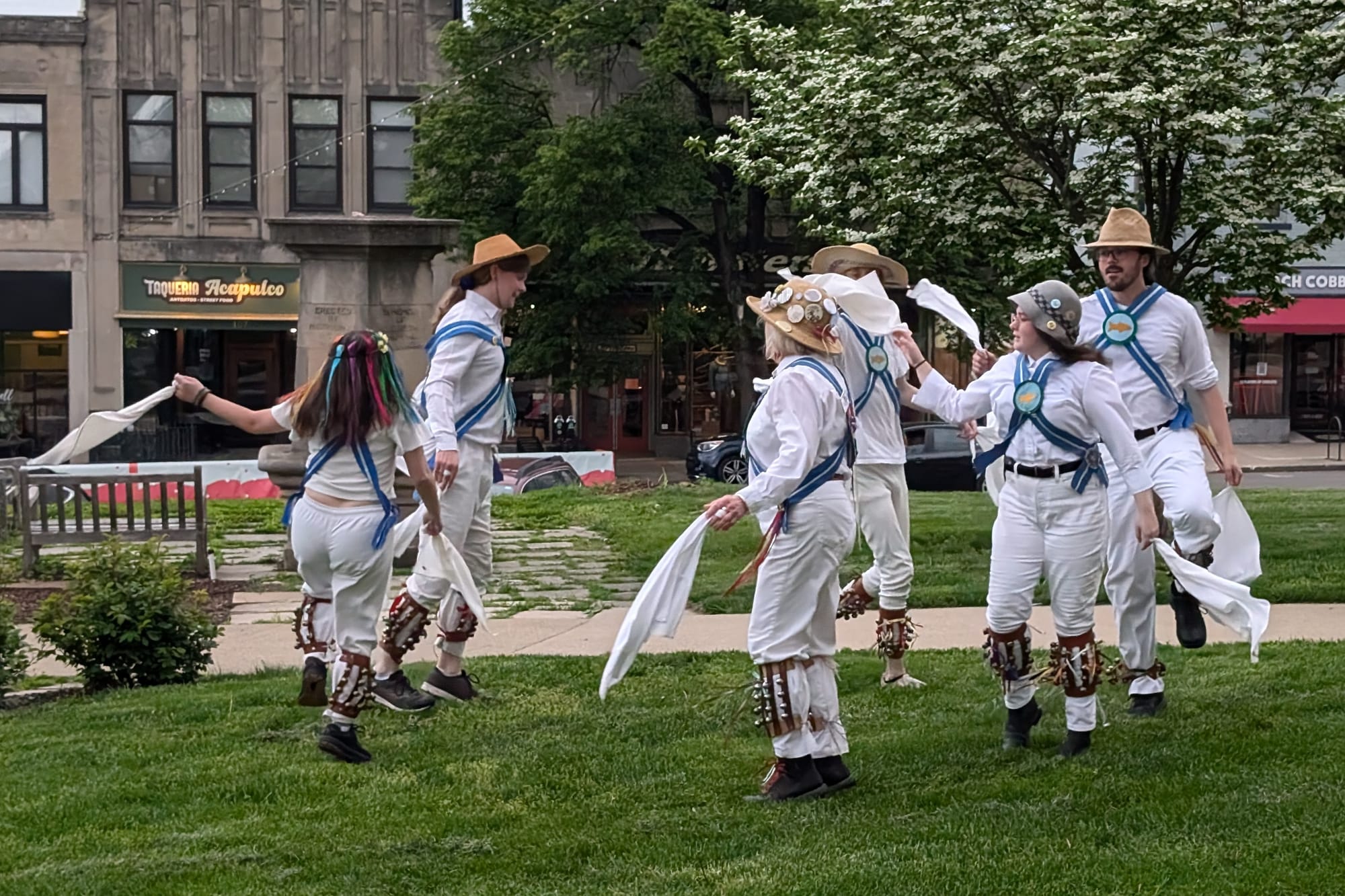

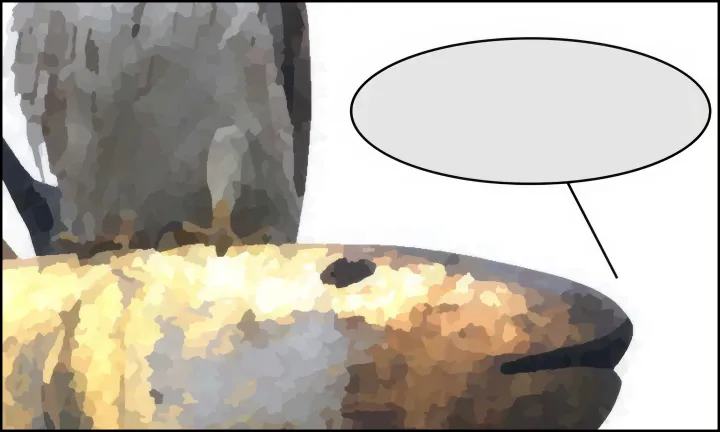
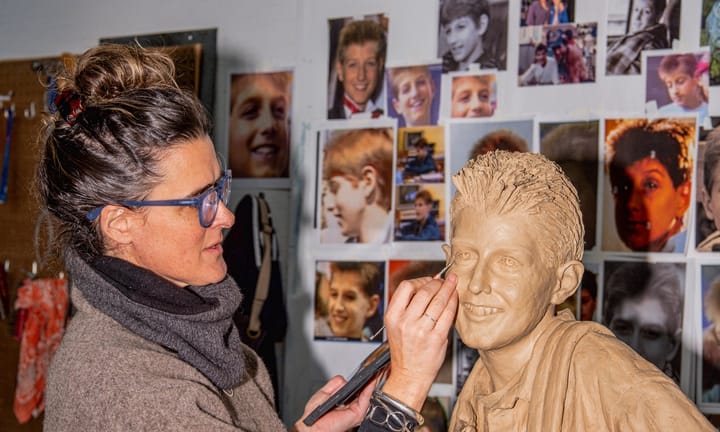
Comments ()